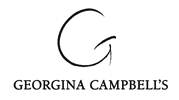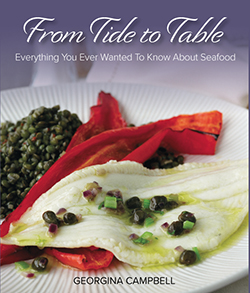Article BEER OF THE MONTH
Beer of the Month - Twisted Hop
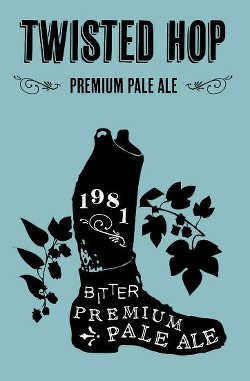
 Beginning a new series that’s all about craft brews, our expert columnist and food blogger KRISTIN JENSEN introduces her first Beer of the Month: Twisted Hop from Hilden Brewing Company
Beginning a new series that’s all about craft brews, our expert columnist and food blogger KRISTIN JENSEN introduces her first Beer of the Month: Twisted Hop from Hilden Brewing Company
ABOUT THE BREWERY
Hilden Brewery is Ireland’s oldest craft brewery, run by the Scullion family in the former stables of historic Hilden House outside the city of Lisburn, Co. Antrim, in Northern Ireland.
The brewery is now managed by Seamus and Ann’s son, Owen, who is a qualified and full-time brewer. The brewery produces 11 draught beers, including a porter, a blonde, a premium red and two amber ales. In addition to these, the brewery also produces five bottled beers and is planning to expand to produce the full range.
If you’d like to see how the beers are made, you can ring Owen at +44 (0)28 9266 0800 to arrange a tour. Afterwards, you can sample the craft beers, both in and with food, at the adjacent Tap Room Restaurant.
The Hilden Beer & Music Festival has been going strong since 1984 and has become even more popular in recent years due to the increased interest in craft beer. With over 30 beers available from a wide range of breweries, local produce and tradition are at the heart of the festival.
Off-sales are available from the brew house during the normal working hours of the week and can be arranged to be picked up outside of these hours and on a Saturday from the Tap Room Restaurant.
You can also try the beers at Molly’s Yard and The John Hewitt in Belfast and other selected pubs as well as at the increasingly popular beer festivals throughout the country, which Hilden Brewery pioneered.
ABOUT THE BEER
Beer style: Pale ale
ABV: 4.7%
Colour: Deep gold
Serve in: Goblet or pint glass
Matches well with: Burgers, roast chicken, roast beef, cold meats, salty cheeses
Twisted Hop is, as the name suggests, all about the hops, brewed with Galaxy hops from Australia and balanced with Brewer’s Gold hops from Germany. And yet it’s not too aggressive, like some other hop-forward beers can be, which makes it a very drinkable beer.
Pouring a deep gold colour, it has the characteristic bitterness you’d expect from this style, with a lingering piney hop flavour, a medium body and a dry, bitter, crisp finish with a resiny, citrusy, slightly floral aroma.
Try pairing Twisted Hop with burgers, roast chicken or roast beef, but avoid serving it with creamy, spicy food or food that is either sweet or vinegary.
It would be especially good served alongside a ploughman’s lunch of thick granary bread, cold slices of ham and a strong Irish cheese like mature Coolea.
Overall winner of the inaugural Dublin Craft Beer Cup in 2013, beating off competition from over 100 breweries worldwide, Twisted Hop is a self-styled ‘new Irish classic’ and is a perfect introduction to craft pale ales.
 Kristin Jensen is a freelance editor specialising in cookery and food books and has worked with many of Ireland's top food writers and chefs. She writes the Edible Ireland blog and is a co-founder of the Irish Food Bloggers Association
Kristin Jensen is a freelance editor specialising in cookery and food books and has worked with many of Ireland's top food writers and chefs. She writes the Edible Ireland blog and is a co-founder of the Irish Food Bloggers Association
Beer of the Month - Chocolate Milk Stout
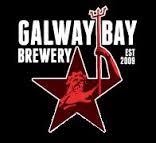
 Continuing a new series that’s all about craft brews, our expert columnist and food blogger KRISTIN JENSEN introduces a Beer of the Month that might go down a treat on Valentine’s Day: Chocolate Milk Stout from Galway Bay Brewery
Continuing a new series that’s all about craft brews, our expert columnist and food blogger KRISTIN JENSEN introduces a Beer of the Month that might go down a treat on Valentine’s Day: Chocolate Milk Stout from Galway Bay Brewery
ABOUT THE BREWERY
Established in 2009, Galway Bay Brewery was Galway’s first microbrewery and is the latest business venture from Jason O’Connell and Niall Walsh, the Galway natives behind The Cottage, The Oslo and The Salthouse.
Situated in the Oslo pub in Salthill village but due to move to an on-premises building at the back of the pub soon, Galway Bay Brewery will be expanding to include brewery tours and talks on the craft of brewing with the brewer himself.
The brewery currently produces Bay Ale, an Irish red ale; Stormy Port, a porter; Buried at Sea, a chocolate milk stout; Full Sail, a dry-hopped IPA; and Of Foam and Fury, a double IPA. Limited edition rotational brews are offered too.
The beer is available in their Galway and Dublin pubs (The Oslo, The Cottage, The Salthouse and The Scholar’s Rest in Galway; and Against the Grain, The Black Sheep, The Brew Dock and The Dark Horse in Dublin) and is also now available in 500ml bottles in good off-licenses throughout the country.
ABOUT THE BEER
Beer style: Chocolate milk stout
ABV: 4.5%
Colour: Deep brown
Serve in: Mug or snifter
Matches well with: Chocolate or chocolate desserts but also steak or roasted beef
With Valentine’s Day right around the corner all thoughts turn towards chocolate, so this chocolate milk stout is perfect for this time of year, either for enjoying on its own or for sipping alongside a decadent dessert or box of chocolates.
It’s deep brown in the glass with a delicate latte-coloured head that dissipates fairly quickly. The aroma of roasted coffee dominates, but it’s a little earthy and smoky too.
The dark chocolate flavour is upfront, balanced by the slight tang of the hops and a roasted, malty edge and a slightly bitter finish that stops the beer from being too sweet. The smooth mouthfeel and some gentle fizz make it surprisingly light for a stout and very drinkable.
When it comes to matching this beer with food, putting stout and chocolate together picks up on the roasted, bitter notes in each of them.
Try drinking Buried at Sea with your Valentine’s Day chocolates or with a baked chocolate dessert like cake or brownies – it will not only complement the flavours, but the carbonation will also help to lighten up rich desserts.
On the savoury side, it would also match well with the charred flavours of an unadorned steak or roasted beef.
 Kristin Jensen is a freelance editor specialising in cookery and food books and has worked with many of Ireland's top food writers and chefs. She writes the Edible Ireland blog and is a co-founder of the Irish Food Bloggers Association
Kristin Jensen is a freelance editor specialising in cookery and food books and has worked with many of Ireland's top food writers and chefs. She writes the Edible Ireland blog and is a co-founder of the Irish Food Bloggers Association
Beer of the Month - Black IPA
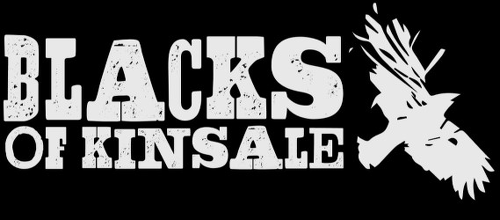
 Continuing her new series that’s all about craft brews, our expert columnist and food blogger KRISTIN JENSEN says “Forego the usual pint of the black stuff this Paddy’s Day for something different altogether: a black IPA.”
Continuing her new series that’s all about craft brews, our expert columnist and food blogger KRISTIN JENSEN says “Forego the usual pint of the black stuff this Paddy’s Day for something different altogether: a black IPA.”
ABOUT THE BREWERY
Like a lot of craft brewers, Sam Black started out with a home brewing kit. Fast forward a few years and he and his wife, Maudeline, traded up and founded the Kinsale Craft Brewery in 2013 in Co. Cork. The Blacks are unique in that their brewery was crowdfunded with contributions from Ireland (including many Beoir members) as well as the US, the UK and the Netherlands.
The Blacks say that they want to produce beers that have ‘passion and personality’, and so far they are bucking the trend by not following the usual pale ale/red ale/stout offering of most other Irish craft brewers.
They currently make their flagship beer, Kinsale Pale Ale, an American-style pale ale, and Black IPA, a specialty beer that’s like a hoppy porter.
Brewery tours are scheduled to start in March 2014 and we look forward to seeing what they’ll do next. Check their website for stockists.
ABOUT THE BEER
Beer style: Black IPA
ABV: 5%
Colour: Deep brown
Serve in: Pint glass or tulip glass
Matches well with: Smoked fish or meat, beef, burgers, lamb, spicy food, Mexican food, Thai food or Vietnamese food.
Black IPAs and black lagers are a relatively new trend in craft beers. You could say that a black IPA is like a hoppy porter. It’s basically an IPA made with roasted, dark barley, which is what gives it its darker colour. It’s not quite as bitter as a regular IPA and it also has the roasted maltiness of a porter. The Beer Judge Certification Program, which has an excellent guide to beer styles, doesn’t quite know what to do with them yet and lobs them into the catch-all ‘Specialty Beer’ category.
In the glass, my first impression was that it was the colour of cola with a thin, creamy beige head. It can be disconcerting to raise a glass of what looks like stout to your nose and get a blast of piney hops and a bit of orange citrus, but once you get past that you can detect a little bit of chocolate and ripe honeydew melon too.
Being an IPA, bitterness is the first impression, but it’s counterbalanced by the dark roasted malts with a hint of coffee. It’s a very clean, dry beer with a light body and a lingering bitter finish that begs for another sip. In other words, it’s very, very drinkable. If you don’t think you like IPAs, see if this black IPA will change your mind.
As with any IPA, try pairing this beer with smoked fish or meat, spicy food, Mexican food, Thai food or Vietnamese food. Its porter-like qualities means it could also stand up to more flavourful food like beef, burgers or lamb too.
 Kristin Jensen is a freelance editor specialising in cookery and food books and has worked with many of Ireland's top food writers and chefs. She writes the Edible Ireland blog and is a co-founder of the Irish Food Bloggers Association
Kristin Jensen is a freelance editor specialising in cookery and food books and has worked with many of Ireland's top food writers and chefs. She writes the Edible Ireland blog and is a co-founder of the Irish Food Bloggers Association
Beer of the Month - Brú Rua

 Continuing her series all about craft brews, our expert columnist and food blogger KRISTIN JENSEN says “This pleasant, fruity, easy-drinking red matches well with food but, at 4.2% ABV, it would also hold its own as a session beer: a good all round red.”
Continuing her series all about craft brews, our expert columnist and food blogger KRISTIN JENSEN says “This pleasant, fruity, easy-drinking red matches well with food but, at 4.2% ABV, it would also hold its own as a session beer: a good all round red.”
ABOUT THE BREWERY
Located on the banks of the River Boyne in the historic town of Trim, Co. Meath, it’s not surprising that Brú Brewery is inspired by Irish heritage and mythology. Founders Dáire Harlin and Paddy Hurley also take a lot of pride in supporting the local economy and in the fact that they source their malts in Ireland.
This is an Irish craft beer that’s Irish through and through, even down to the names of the beers – Rua, their red ale, Rí, an IPA, and Dubh, their stout.
They plan on offering tours in the near future and have a tasting room for that purpose, so contact them if you’d like to have a look around.
ABOUT THE BEER
Beer style: Irish red ale
ABV: 4.2%
Colour: Copper
Serve in: Pint glass or tulip glass
Matches well with: Bacon and cabbage, BBQ, burgers, chicken, lamb, pork, pizza
In the glass, it pours a coppery amber. There’s little carbonation, so there’s no head to speak of and what little head there is quickly disappears. Aromas and flavours of biscuits, berries and golden syrup give way to a moderate measure of tangy hop bitterness.
All in all, it’s a pleasant, fruity, easy-drinking red, and at 4.2% ABV, it would hold its own as a session beer.
Red ales match well with bacon and cabbage, BBQ, burgers, chicken, lamb, pork and pizza, and this one would be no exception. A good all-round red.
 Kristin Jensen is a freelance editor specialising in cookery and food books and has worked with many of Ireland's top food writers and chefs. She writes the Edible Ireland blog and is a co-founder of the Irish Food Bloggers Association
Kristin Jensen is a freelance editor specialising in cookery and food books and has worked with many of Ireland's top food writers and chefs. She writes the Edible Ireland blog and is a co-founder of the Irish Food Bloggers Association
Beer of the Month - Amber-Ella
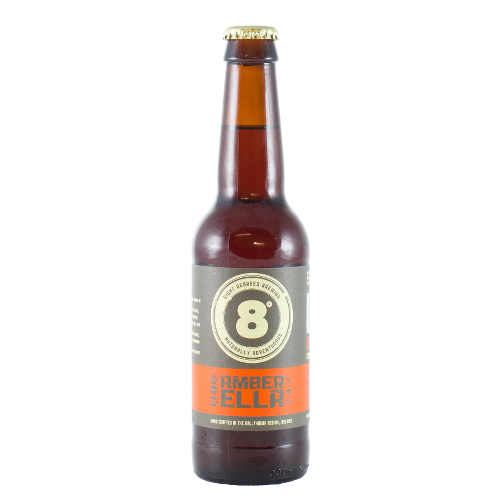
 This series is all about Irish craft brews and, for May, our expert columnist and food blogger KRISTIN JENSEN introduces a Beer of the Month that’s made in north Cork by a couple of quality driven entrepreneurs from down under - and it’s going down a storm
This series is all about Irish craft brews and, for May, our expert columnist and food blogger KRISTIN JENSEN introduces a Beer of the Month that’s made in north Cork by a couple of quality driven entrepreneurs from down under - and it’s going down a storm
ABOUT THE BREWERY
Eight Degrees Brewery beers are handcrafted in the beautiful Ballyhoura/ Galtee Mountains region of north Cork, by Scott Baigent and Cam Wallace, a Kiwi and an Aussie.
Their mission is to make modern interpretations of traditional Irish ale and lager styles, providing distinctive malt and hop characteristics for what they call ‘naturally adventurous’ beers.
The core beers include Howling Gale Ale, Sunburnt Irish Red, Knockmealdown Porter, Barefoot Bohemian Pilsner – and now Amber-Ella American Amber Ale too (more on that in a minute).
Scott and Cam have a lot of fun with their seasonals and specials, such as the limited edition Kindred Spirit beer, a coffee stout aged in 25-year-old whiskey barrels from the Teeling Whiskey Company; the Hurricane IPA vs. Cyclone IPA ‘hop off’; or the ‘Back to Black’ range that they brought out at the end of 2013.
Eight Degrees has also invested in their own grain silo and mill in order to use malt that has been grown and malted in Ireland, which they can source locally from the Cork Malting Company. The mill allows the brewery to mill the malt to their own specifications and gives them more control over the final result.
In March 2013, Eight Degrees was one of two winners (and the only food business) in the Best Emerging Business category in the SFA National Small Business Awards. In April 2014, they won a bronze medal at the World Beer Cup – the brewing equivalent of the Olympics – for Amber-Ella, their American-style amber ale.
ABOUT THE BEER
Beer style: American amber ale
ABV: 5.8%
Colour: A coppery amber
Serve in: Mug, pint glass, tulip glass
Matches well with: Bacon and cabbage, BBQ, burgers, chicken, lamb, pork and pizza
Amber-Ella was originally brewed as a one-off for the Irish Craft Beer and Cider Festival in 2013, but in April 2014 it won a bronze medal at the World Beer Cup – the brewing equivalent of the Olympics. It’s a huge win for Eight Degrees and a big boost for the profile of Irish craft beer internationally.
In February 2014, Amber-Ella also came 1st runner-up in the Beoir 2014 Beer of the Year competition. All this means that Amber-Ella will now be joining the Eight Degrees permanent core range of beers, which is great news for this beer’s many fans.
In the glass, it pours a coppery amber, as the name suggests. The aroma is of spicy hops (Simcoe, Galaxy and Ella hops, to be specific) with tropical notes of peaches, mango and a little toffee or brown sugar underneath that.
The flavour is well balanced: the slight caramel sweetness is spiked with the citrusy bite of the hops; think grapefruit or bitter orange. This is the kind of beer that begs for another sip, and then another.
The good balance between the hops and the malts in this beer makes it a versatile beer to successfully pair with all kinds of foods, but its big flavour means it would overpower more delicate foods, such as seafood. Amber ales are quite similar to red ales, and as such this one would match well with bacon and cabbage, BBQ, burgers, chicken, lamb, pork and pizza.
 Kristin Jensen is a freelance editor specialising in cookery and food books and has worked with many of Ireland's top food writers and chefs. She writes the Edible Ireland blog and is a co-founder of the Irish Food Bloggers Association
Kristin Jensen is a freelance editor specialising in cookery and food books and has worked with many of Ireland's top food writers and chefs. She writes the Edible Ireland blog and is a co-founder of the Irish Food Bloggers Association
Beer of the Month - Belfast Lager
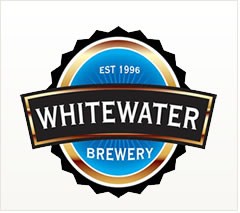
 This series is all about Irish craft brews and, for June, our expert columnist and food blogger KRISTIN JENSEN introduces a Beer of the Month that’s made by one of Ireland’s longest running and most successful craft breweries - and in one of the country’s most scenic areas
This series is all about Irish craft brews and, for June, our expert columnist and food blogger KRISTIN JENSEN introduces a Beer of the Month that’s made by one of Ireland’s longest running and most successful craft breweries - and in one of the country’s most scenic areas
ABOUT THE BREWERY
Set amidst the spectacular Mountains of Mourne, Whitewater Brewery is Northern Ireland’s largest microbrewery and has been steadily ticking along since 1996, making it one of the first Irish craft breweries.
The brewery was called one of the best in the world in the prestigious International Beer Challenge 2007 and their beers have won many awards over the years, including their Clotworthy Dobbin and Belfast Lager being named as one of the 50 best beers in the world in the International Beer Challenge 2007 and 2008, respectively.
They produce a selection of cask beers, a lager in keg and many bottled beers, all of which are handcrafted in small batches. The brewery also has its own gastropub, the White Horse Inn, located 5 miles from the brewery in Saintfield. Tours of the brewery are possible but must be booked in advance.
Check the website for a listing of where to find their beer in bottles, kegs and casks in Northern Ireland, which are widely available there. The beers are also available in the Republic, including in Tesco.
ABOUT THE BEER
Beer style: Lager
ABV: 4.5%
Colour: Hazy straw yellow
Serve in: Mug, pilsner/pokal, pint glass, stange or tulip glass
Matches well with: BBQ, burgers, chicken, pizza, seafood, Mexican food, mildly spicy food
Lager is the most popular beer style in the world by far, accounting for 90% of all beer consumption. Yet most of that is big brand lager, which is only a bland, sad shadow of what a proper lager should be. True lagers are dry and crisp, with a distinctive hop bitterness and a character that comes from the use of malted barley rather than corn or rice.
Whitewater’s Belfast Lager pours a pale, hazy straw yellow from the bottle and is quite yeasty and bready, both in terms of the aroma and the flavour. The first whiff is reminiscent of bread dough with a little lemony citrus note behind that, while Saaz hops give it a peppery bite. At 4.5% ABV, it’s a sessionable beer that would be perfect for a BBQ. If you’re looking for a good all-round summertime beer, it’s got to be a lager.
When it comes to matching beer and food, lager is a great crowd pleaser – it’s an easy-drinking beer that won’t steal the spotlight and matches well with a wide range of different food. It plays well with burgers, chicken, pizza, Mexican food and mildly spicy food. It’s also perfect for summertime, as it’s ideal for a BBQ and won’t overpower delicate seafood.
 Kristin Jensen is a freelance editor specialising in cookery and food books and has worked with many of Ireland's top food writers and chefs. She writes the Edible Ireland blog and is a co-founder of the Irish Food Bloggers Association
Kristin Jensen is a freelance editor specialising in cookery and food books and has worked with many of Ireland's top food writers and chefs. She writes the Edible Ireland blog and is a co-founder of the Irish Food Bloggers Association
Beer of the Month - Lazy Sunday Saison
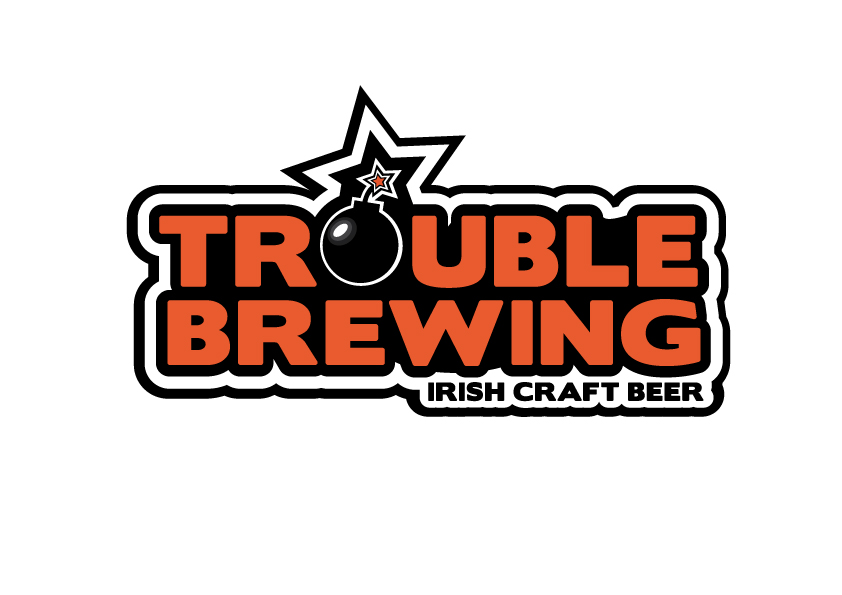
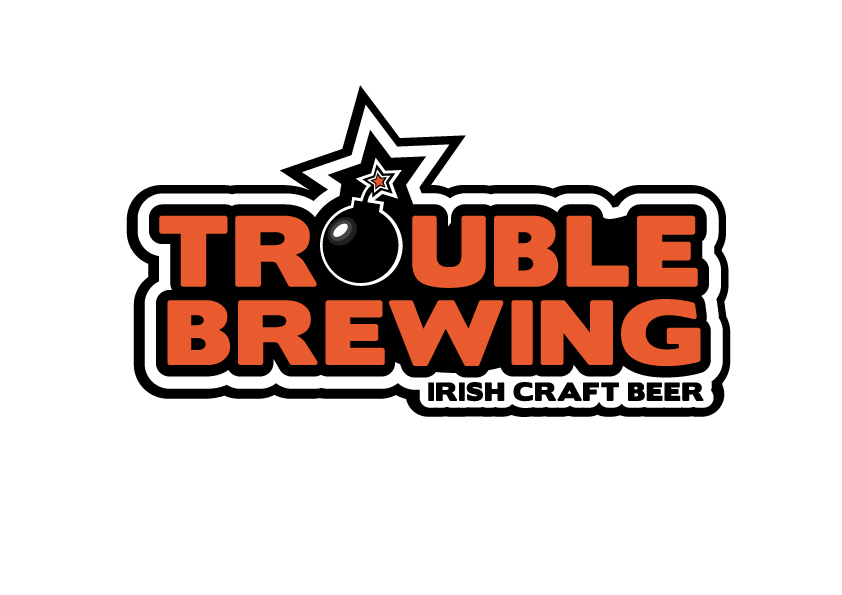 This series is all about Irish craft brews and, for July, our expert columnist and food blogger KRISTIN JENSEN introduces a seasonal treat that’s ‘the little black dress of beer – its versatility means it’s a good match for just about anything’
This series is all about Irish craft brews and, for July, our expert columnist and food blogger KRISTIN JENSEN introduces a seasonal treat that’s ‘the little black dress of beer – its versatility means it’s a good match for just about anything’
ABOUT THE BREWERY
Trouble Brewing was founded in 2009 by three enthusiasts, Paul O’Connor, Stephen Clinch and Thomas Prior (head brewer), with the aim of bringing quality beer to the Irish market.
Their philosophy is to brew beers full of character and flavour, using only high-quality ingredients. The brewery was established to create the kinds of beers the founders wanted to see in their local pubs: ones packed with flavour and presented in a spirit of fun and good humour.
Trouble Brewing beers are handcrafted from original recipes, without the use of additives, preservatives or pasteurisation, and are brewed in small batches in their steam-fired brewhouse in Co. Kildare.
There are three beers in the core range: Sabotage India Pale Ale, a strong, amber-coloured ale brewed with five different varieties of hops; Golden Ale, a full-bodied golden ale with a distinctive hop flavour; and Dark Arts Porter, a dark, unfiltered porter. They are also doing an increasing number of limited edition specials now too – such as this saison.
ABOUT THE BEER
Beer style: Saison
ABV: 6.1%
Colour: Honeyed orange
Serve in: Pint or tulip glass
Matches well with: Brunch, grilled chicken, Indian food, Mexican food, mussels, pork, salads, seafood, sausages, Thai food, Vietnamese food
As beers go, saison was made for summer – literally. This Belgian-style farmhouse ale was originally brewed in the winter and then set aside for the farm workers to enjoy in the hot summer months.
The Lazy Sunday Saison is true to the style – it’s a refreshing pale ale with fruity and spicy notes. It’s a honeyed orange in the glass with a spicy, yeasty, citrusy aroma that carries through to the flavour. Trouble Brewing makes this saison with barley, wheat, rye and Sterling hops, but the wheat is the real backbone of this beer, with the hops taking a bit of a back seat. The taste is tangy orange peel, full of fruity esters, with a pleasantly bitter finish. And at 6.1% ABV, this is a dangerously drinkable beer that punches above its weight.
When it comes to food, saison is the little black dress of beer – its versatility means it’s a good match for just about anything. Trouble Brewing says their saison matches well with steak or shellfish from the barbecue. Try it with brunch, grilled chicken, Indian food, Mexican food, mussels, pork, salads, seafood, sausages, Thai food, Vietnamese food – the sky is the limit. Or try it with an Alpine cheese, such as Gruyere.
 Kristin Jensen is a freelance editor specialising in cookery and food books and has worked with many of Ireland's top food writers and chefs. She writes the Edible Ireland blog and is a co-founder of the Irish Food Bloggers Association
Kristin Jensen is a freelance editor specialising in cookery and food books and has worked with many of Ireland's top food writers and chefs. She writes the Edible Ireland blog and is a co-founder of the Irish Food Bloggers Association
N17 Rye Ale - Beer of the Month

 This series is all about Irish craft brews and, for August, our expert columnist and food blogger KRISTIN JENSEN introduces N17 Rye Ale, a delicious beer from a very promising newly launched brewery
This series is all about Irish craft brews and, for August, our expert columnist and food blogger KRISTIN JENSEN introduces N17 Rye Ale, a delicious beer from a very promising newly launched brewery
ABOUT THE BREWERY
As its name suggests, the N17 Brewery is just off the – you guessed it – N17 in Tuam, County Galway. Sarah Roarty launched her brewery in January 2014 and swiftly went on to win a bronze medal for her oatmeal stout at the Alltech International Craft Brews and Food Fair in February. But she didn’t rest on those laurels for long – later that same year, she also qualified as Ireland’s first female beer sommelier.
Sarah has a unique business philosophy and believes that everything and everyone has value, and as such her brewery ‘squeezes every last drop out of the brewing process’. Beer is the pinnacle product, but eight more products trickle down from it, including mushrooms, fish farming and even dog biscuits.
Inspired by her daughter Clara, who was diagnosed with Angelman syndrome when she was one year old, Sarah has worked hard to create employment opportunities for people in her community by focusing on their skills and abilities, not their limitations.
An inspiring business ethos plus award-winning beer make N17 Brewery one to watch.
ABOUT THE BEER
Beer style: Rye ale
ABV: 5%
Colour: Amber red
Serve in: Mug, pint glass or tulip glass
Matches well with: Spicy food or lighter foods
The N17 brewery hit the ground running with this rye ale, their flagship beer. It pours a beautiful amber red colour, with a nice fluffy head that doesn’t hang around long. The aroma is intriguing and hard to place at first, but there are hints of berries and dark brown muscovado sugar.
It's smooth, thin mouthfeel and soft carbonation make it very drinkable. The malty, honeyed sweetness is undercut by the dry, spicy, slightly tangy bite of the rye that gives way to a lingering bitter finish. If you’re not a big fan of hoppy beers, give this one a try.
If you want to pair this rye ale with food, try contrasting it with lighter-flavoured foods so that you don’t overwhelm the beer. The dry, spicy bite of a rye beer means it would also be a good complement to spicy cuisines, such as Mexican or Indian.
Cheeses to try would be a chevre or goat’s cheese, such as Killeen, a Gouda, such as Mossfield, or even a mild blue cheese, such as Boyne Valley Blue.
 Kristin Jensen is a freelance editor specialising in cookery and food books and has worked with many of Ireland's top food writers and chefs. She writes the Edible Ireland blog and is a co-founder of the Irish Food Bloggers Association
Kristin Jensen is a freelance editor specialising in cookery and food books and has worked with many of Ireland's top food writers and chefs. She writes the Edible Ireland blog and is a co-founder of the Irish Food Bloggers Association
Carlow Brewing Company Leann Folláin - Beer of the Month
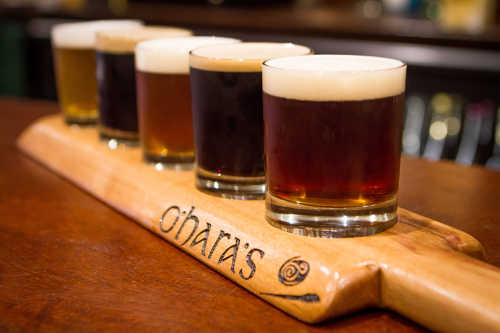
 For September, our expert columnist, food blogger - and joint author of Slainte! The complete Guide To Irish Craft Beers and Ciders - KRISTIN JENSEN introduces a delicious stout from one of Ireland’s oldest craft breweries. Try it for yourself with a classic autumn food pairing at the Galway International Oyster Festival (25-28 September).
For September, our expert columnist, food blogger - and joint author of Slainte! The complete Guide To Irish Craft Beers and Ciders - KRISTIN JENSEN introduces a delicious stout from one of Ireland’s oldest craft breweries. Try it for yourself with a classic autumn food pairing at the Galway International Oyster Festival (25-28 September).
ABOUT THE BREWERY
Better known as O’Hara’s Brewery, Carlow Brewing Company was founded in 1996 by the O’Hara family and is one of the most successful and oldest of Ireland’s craft breweries.
The brewery is located in Bagenalstown, Co. Carlow, the heart of Ireland’s historical hop- and malt-growing Barrow Valley region, where the water supply is particularly suited to brewing stouts and ales.
The brewery is independent and family owned. A new custom-built brewery was opened in 2009 and expanded in 2011 with the addition of a new automated kegging line, more tank capacity and more warehouse space.
A new partnership with the Lexington Brewing Company in Kentucky will see the Carlow Brewing Company move into new territory when they start to distil whiskey. They are also now acting as importers for the Lexington Brewing Co.’s Kentucky Bourbon Barrel Ale.
Founder Seamus O’Hara explains the philosophy: ‘We have gone back to basics and brew our beers as they used to be brewed – with natural ingredients and no artificial additives. We believe this leads to a superior quality product with robust body, taste, flavour and aroma.’ Enthusiastic consumer response certainly bears this out as well as a host of awards over the years.
ABOUT THE BEER
Beer style: Stout
ABV: 6%
Colour: Black
Serve in: Snifter or mug
Matches well with: Beef, berries, black pudding, chocolate, oysters, roasted and smoked food, shepherd’s pie, steak, stew, venison
The Carlow Brewing Company was one of the first pioneers of what is now a burgeoning industry, and this stout is a stalwart of the ever-changing stable of craft beers. Its Gaelic name translates as ‘wholesome stout’ and the brewery calls it the big brother of their regular stout, with a bolder flavour and more full-bodied mouthfeel.
It pours an opaque black with a striking tan head. Chocolate and dark roasted coffee aromas and flavours are to the fore, and it has spicy, bitter, slightly smoky notes too that follow in close behind.
The brewers recommend serving this stout at 6°C to 8°C, but they say that some drinkers, particularly in the southeast, enjoy it at room temperature. It has more oomph than a regular stout, which makes it particularly good for slow sipping or matching with a meal.
Stouts are a famous match with oysters, which are in season now. The bitter, smooth, roasted flavour of a dry Irish stout is a classic contrast to creamy, salty, sweet oysters. Try it for yourself at the Galway International Oyster Festival, which takes place from 25-28 September this year.
Stouts are also a good match for heartier winter fare such as beef, berries, black pudding, chocolate, roasted and smoked food, shepherd’s pie, steak, stew and venison.
Blue cheese is a beautiful match with stout, but you might also like to try Alpine-style cheese, such as Hibernia or St Gall, or a hard cheese like Coolea or a Cheddar.
 Kristin Jensen is a freelance editor specialising in cookery and food books and has worked with many of Ireland's top food writers and chefs. She writes the Edible Ireland blog and is a co-founder of the Irish Food Bloggers Association
Kristin Jensen is a freelance editor specialising in cookery and food books and has worked with many of Ireland's top food writers and chefs. She writes the Edible Ireland blog and is a co-founder of the Irish Food Bloggers Association
Dan Kelly's Cider - Beer of the Month
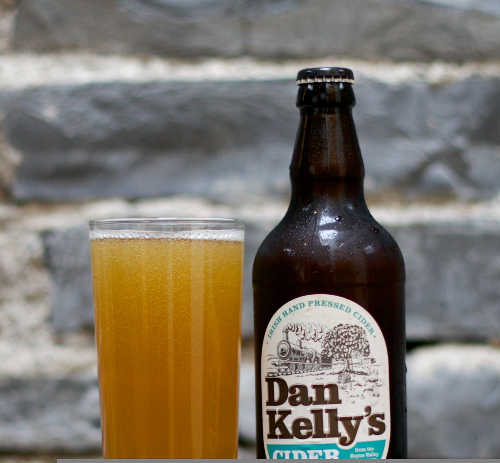
 For November, our expert columnist, food blogger - and joint author of Slainte! The complete Guide To Irish Craft Beers and Ciders - KRISTIN JENSEN has moved away from beer, to offer up a very promising, and seasonal, craft cider
For November, our expert columnist, food blogger - and joint author of Slainte! The complete Guide To Irish Craft Beers and Ciders - KRISTIN JENSEN has moved away from beer, to offer up a very promising, and seasonal, craft cider
ABOUT THE CIDER MAKER
Boyne Grove Fruit Farm is a family business to the core. Their farm manager, Henry Mallon, has seen four generations work on the farm, and the fifth is on its way. Olan, Fiona and John Paul McNeece, a brothers-and-sister team, are the latest in a long line of apple growers.
Their great-grandfather planted a Bramley orchard as part of his small farm in Co. Armagh in the late 1890s and their grandfather went on to buy his own farm in 1933, also in Armagh.
Their father, Gerry, bought their current orchard in Drogheda, Co. Louth, in 1962 (from the local Cairnes brewing family, coincidentally enough). They currently produce one cider, Dan Kelly’s Cider, named after their great-grandfather on their father’s mother’s side who drove the Dublin–Belfast train that runs through the farm.
It’s made from a blend of their own hand-picked Bramleys and dessert apples and wild yeasts. They also plan to develop single varietals and vintage ciders and are hoping to be open for visits and tours of the cider-making facility in the future. Ones to watch.
ABOUT THE CIDER
Cider style: Medium sweet
ABV: 4.5%
Colour: Golden
Serve in: Pint glass or wine glass
Matches well with: Apple desserts, chicken, curry, pork, roasted vegetables, sausages, seafood
At first glance, you could mistake a glass of Dan Kelly’s Cider for a lager. It has that same golden hue and is darker than many other Irish craft ciders, which tend to be quite pale, like white wine.
The aroma is of apple peels and brown sugar. That same sweetness carries through to the flavour, which is like a toffee apple version of cider, full of golden syrup and caramel notes with a nice tannic bite to balance it and stop it from being too cloying. It’s an easy-drinking cider that is just as nice to sip on its own as it is to match with a meal.
You’d be surprised at how many foods cider can pair with. Pairing a fruity cider like this one with fruity dishes is the easiest, most intuitive match. This applies to both sweet and savoury dishes – an apple crumble or pork with roasted apples will both get a lift when served with an equally fruity cider.
The delicate flavour of cider also plays well with chicken, Asian food, spicy curry (sweet cider only, not dry) and roasted root vegetables, but cider loves pork best of all. Pork belly, sausages, chops, ham and bacon will sing when served with a good cider to drink alongside, as the sweetness of the cider is a classic contrast to the salty pork.
Cider is also a beautiful match with cheese. Cider and a strong Cheddar is the most well-known match, but it also works well with Camembert, Brie and creamy cheeses. Sweet cider can also contrast nicely with salty blue cheeses, such as Bellingham Blue, or try a dry cider with sheep’s milk or goat’s milk cheeses. The earthy mustiness of washed rind cheeses complement those same qualities in sweet cider.
 Kristin Jensen is a freelance editor specialising in cookery and food books and has worked with many of Ireland's top food writers and chefs. She writes the Edible Ireland blog and is a co-founder of the Irish Food Bloggers Association and, together with Caroline Hennessy, is joint author of Slainte! The complete Guide To Irish Craft Beers and Ciders .
Kristin Jensen is a freelance editor specialising in cookery and food books and has worked with many of Ireland's top food writers and chefs. She writes the Edible Ireland blog and is a co-founder of the Irish Food Bloggers Association and, together with Caroline Hennessy, is joint author of Slainte! The complete Guide To Irish Craft Beers and Ciders .
White Gypsy Emerald Fresh - Beer of the Month

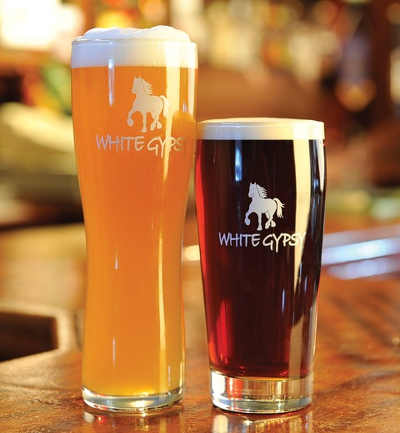 For December, our expert columnist, food blogger - and joint author of Slainte! The complete Guide To Irish Craft Beers and Ciders - KRISTIN JENSEN introduces us to the first all-Irish beer, Emerald Fresh Hop Beer from White Gypsy
For December, our expert columnist, food blogger - and joint author of Slainte! The complete Guide To Irish Craft Beers and Ciders - KRISTIN JENSEN introduces us to the first all-Irish beer, Emerald Fresh Hop Beer from White Gypsy
ABOUT THE BREWER
The White Gypsy Brewery was established in 2009, but owner Cuilán Loughnane has been involved in the Irish microbrewery industry since 1997. The brewery’s philosophy is about getting back in touch with the things that made Ireland famous for its beer but have been forgotten.
White Gypsy pride themselves on sourcing as many ingredients as possible for their beers locally. This includes growing their own hops – 500 plants went in next to the brewery in 2014 and they feature in their flagship all-Irish beer, a pale ale called Emerald. White Gypsy has also sometimes brewed beer under contract for other breweries, including Metalman and Elbow Lane.
White Gypsy produces a varied range that includes a German doppelbock, an American pale ale, a Belgian dubbel and a Russian imperial stout. Unusually, the bottled beer comes in 750ml bottles instead of the more common 330ml or 500ml, a reflection of the fact that these beers have been brewed with food matching in mind and are meant for sharing.
ABOUT THE BEER
Beer style: Pale ale
ABV: 5%
Colour: Straw
Serve in: Pint glass or mug
Matches well with: Chicken, cold meats, seafood
Terroir is a term usually associated with wine, but it’s starting to gain some traction in the beer world too. Terroir is a French term that can be loosely translated as ‘a sense of place’ and refers to the interplay of climate, soil and topography and the unique effect it has on a food or drink. And this beer has it, big time.
The brewer says it best himself on the beer’s label: ‘This very special bottle of beer celebrates a new dawn for independent Irish breweries. By growing our own hops it has allowed us to produce a 100% Irish beer, the first and currently the only one available for sale…This bottle is a snapshot of where the Irish brewing industry stands on this day, the 19th of September 2014.’
Not only is Emerald completely home grown, it’s a seasonal beer too. There is only a small window of time in which to make a fresh hop beer (also known as a wet-hopped beer) when the harvest is at its peak in the autumn; the rest of the hops are dried to be used throughout the year. To give you an idea of how vibrant a fresh hop beer can be, think of the difference between using fresh herbs vs. dried ones in your cooking.
You might think that a fresh hop beer will be extra bitter or punchy, but in fact the opposite is true: this is a beautifully delicate beer. This pale ale is a cloudy straw yellow in the glass and has a fluffy white head, gentle carbonation and a creamy mouth feel. The aroma is of toasted cereal, caramel and apricot jam. Those same elements are reflected in the flavour, which leans towards toffee, dates and vanilla with a grainy backbone of freshly baked white yeast bread to stop the sweetness from being too cloying, and underneath it all is just the slightest spritz of lemon to give it a bit of a lift.
This pale ale is more delicate than most, so match it with food on the lighter side of the spectrum, such as chicken, cold meats, seafood, chowder, creamy pasta sauces, a ploughman’s lunch or even Thai food. Or try pairing it with a mild cheese, such as a fresh goat’s cheese, or a semi-soft white rind cheese, like Brie or Camembert.
Fresh hop beers are meant to be enjoyed right away, so snap up a few bottles if you see them because once it’s gone, it’s gone till next autumn. This special beer would also be a great gift for the craft beer lover in your life this Christmas.
 Kristin Jensen is a freelance editor specialising in cookery and food books and has worked with many of Ireland's top food writers and chefs. She writes the Edible Ireland blog and is a co-founder of the Irish Food Bloggers Association and, together with Caroline Hennessy, is joint author of Slainte! The complete Guide To Irish Craft Beers and Ciders .
Kristin Jensen is a freelance editor specialising in cookery and food books and has worked with many of Ireland's top food writers and chefs. She writes the Edible Ireland blog and is a co-founder of the Irish Food Bloggers Association and, together with Caroline Hennessy, is joint author of Slainte! The complete Guide To Irish Craft Beers and Ciders .
Kinnegar Yannaroddy Porter - Beer of the Month
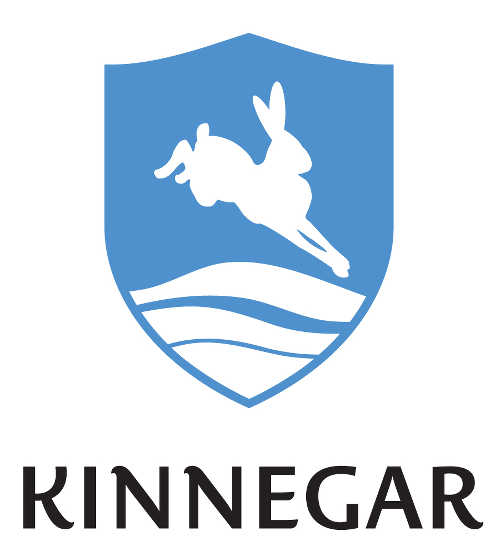
 KRISTIN JENSEN - co-author of Slainte! The complete Guide To Irish Craft Beers and Ciders - introduces us to Kinnegar Yannaroddy Porter, from County Donegal
KRISTIN JENSEN - co-author of Slainte! The complete Guide To Irish Craft Beers and Ciders - introduces us to Kinnegar Yannaroddy Porter, from County Donegal
ABOUT THE BREWER
Headed up by owners Rick LeVert and Libby Carton, Kinnegar Brewing Company makes a small range of finely crafted, all-natural farmhouse beers. Named after the nearby Kinnegar Beach near Rathmullan in County Donegal, their beers are all similarly named after the local landscape.
Kinnegar started out as a nanobrewery, producing only 120 litres a week, but after an expansion in 2013 they now have a 10 hectolitre brewhouse, which means it’s easier to find their beers across Ireland now. Their stable currently includes Devil’s Backbone Amber Ale, Limeburner Pale Ale, Rustbucket Rye Ale and Yannaroddy Porter along with seasonal specials.
ABOUT THE BEER
Beer style: Porter
ABV: 4.8%
Colour: Ruby brown
Serve in: Pint glass or mug
Matches well with: Beef, berries, black pudding, burgers, braised dishes, chocolate, game, ham, lamb, oysters, roasted and smoked foods, scallops, shepherd’s pie, steak, stew
The word ‘coconut’ doesn’t appear in the name of this porter, so the only way you might even know it’s in there is if you read the ingredients list, where it quietly sneaks in at last place. The first time I bought this beer it’s because I was curious about the coconut, but it’s so good that I’ve bought it many times since. It might sound gimmicky at first, but the coconut is so subtle that it doesn’t detract from what is a good, nicely balanced porter.
A huge, fluffy tan head forms on the ruby brown beer when it’s poured from the bottle – so much so that you might have to wait for it to die down a bit to take your first sip. It has a smooth mouthfeel and is naturally carbonated, with flavours of dark-roasted coffee, milk chocolate, molasses and a little bit of sweet dried fruit, such as dates.
You’d be hard pressed to pick the coconut out in a flavour line-up, but knowing it’s there give the beer a fun, exotic edge. The tangy finish has the effect of making you want to take another sip, then another. Porter is less robust than stout and this one is no exception, making for an easy-drinking beer.
Porter is a good match for hearty wintertime food, such as beef, braised dishes, roasted and smoked food, shepherd’s pie and stew, not to mention oysters, and it’s also a surprisingly good match with chocolate. It’s also brilliant with blue cheese as well as Alpine-style and hard cheeses.
 Kristin Jensen is a freelance editor specialising in cookery and food books and has worked with many of Ireland's top food writers and chefs. She writes the Edible Ireland blog and is a co-founder of the Irish Food Bloggers Association and, together with Caroline Hennessy, is joint author of Slainte! The complete Guide To Irish Craft Beers and Ciders .
Kristin Jensen is a freelance editor specialising in cookery and food books and has worked with many of Ireland's top food writers and chefs. She writes the Edible Ireland blog and is a co-founder of the Irish Food Bloggers Association and, together with Caroline Hennessy, is joint author of Slainte! The complete Guide To Irish Craft Beers and Ciders .
Wicklow Wolf American Amber - Beer of the Month
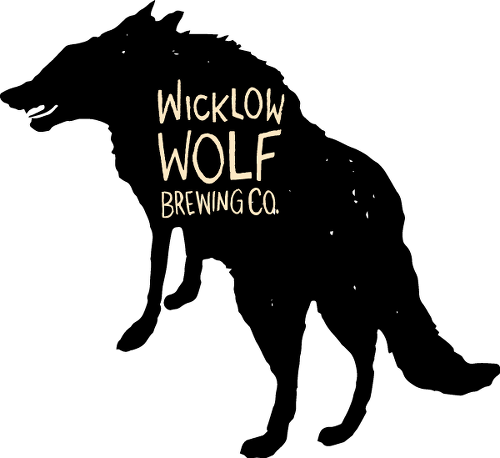
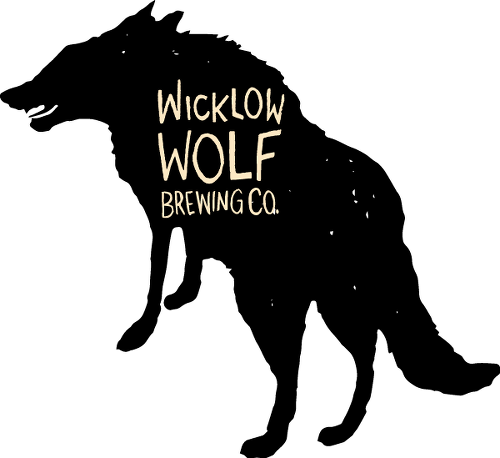 KRISTIN JENSEN - co-author of Slainte! The complete Guide To Irish Craft Beers and Ciders - introduces us to one of Ireland’s newest craft beers, Wicklow Wolf American Amber
KRISTIN JENSEN - co-author of Slainte! The complete Guide To Irish Craft Beers and Ciders - introduces us to one of Ireland’s newest craft beers, Wicklow Wolf American Amber
ABOUT THE BREWER
The Wicklow Wolf Brewing Company doesn’t go in for mystery. They lay all their cards on the table (or in this case, bottle): ‘Wicklow, because that’s where we opened our brewhouse. Wolf, because the last one in Ireland lived around here, and because the hops we plant on our own hop farm takes its name – humulus lupulus – from that wild and proud creature.’
Owners Quincey Fennelly and Simon Lynch launched the brewery in 2014, with brewer Peter Reynier from Colorado, a US craft beer hub, at the helm. Quincey has a background in the drinks industry, while Simon is a horticulturist who trained in Dublin’s Botanic Gardens. What all three share, unsurprisingly, is a love of good craft beer.
There’s a strong locavore ethos at the foundation of the brewery, complete with 10 acres of hops that they’ve planted in Roundwood. These were used in their Fresh Hopped 2014 All Irish Ingredient Blonde Ale, with Irish malt sourced from the Malting Company of Ireland.
With plans to start offering tours and to employ more people at the brewery and the farm, this brewery is one to watch.
ABOUT THE BEER
Beer style: Amber ale
ABV: 4.8%
Colour: Copper
Serve in: Mug, pint glass, tulip glass
Matches well with: Bacon and cabbage, BBQ, burgers, chicken, lamb, pork and pizza
Wicklow Wolf is one of the newest craft brewers on the block, and they’ve hit the ground running with their American amber ale. It’s an attractive beer in the glass, with a burnished copper colour and a thin, paper-white head.
The aroma takes you straight to the tropics with a whiff of pineapple, and that follows through in the flavour, with orange zest and sweet caramel. The brewer says it’s mellow, but there’s a pronounced bitter bite from the trio of Citra, Cascade and Magnum hops and a lasting bitter finish – which is no bad thing.
This is a great beer to have with a pizza or a big juicy burger with the works. Amber ales are quite similar to red ales, so this one would also match well with bacon and cabbage, BBQ, chicken, lamb or pork. Just steer clear of delicate food, like seafood, because this beer would overpower it. As for cheese, try a hard, salty cheese like Parmesan or Pecorino, a wedge of mature Mossfield or a mature Coolea.
 Kristin Jensen is a freelance editor specialising in cookery and food books and has worked with many of Ireland's top food writers and chefs. She writes the Edible Ireland blog and is a co-founder of the Irish Food Bloggers Association and, together with Caroline Hennessy, is joint author of Slainte! The complete Guide To Irish Craft Beers and Ciders .
Kristin Jensen is a freelance editor specialising in cookery and food books and has worked with many of Ireland's top food writers and chefs. She writes the Edible Ireland blog and is a co-founder of the Irish Food Bloggers Association and, together with Caroline Hennessy, is joint author of Slainte! The complete Guide To Irish Craft Beers and Ciders .
Bran & Sceolan Irish IPA - Beer of the Month
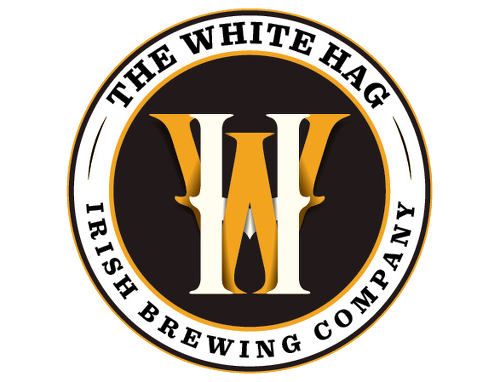
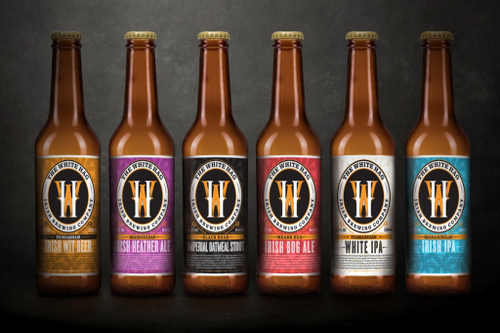 KRISTIN JENSEN - co-author of Slainte! The complete Guide To Irish Craft Beers and Ciders - introduces us to one of Ireland’s newest craft beers, White Hag Brewing Company Bran and Sceolan Irish IPA
KRISTIN JENSEN - co-author of Slainte! The complete Guide To Irish Craft Beers and Ciders - introduces us to one of Ireland’s newest craft beers, White Hag Brewing Company Bran and Sceolan Irish IPA
ABOUT THE BREWER
You could say that the White Hag Irish Brewing Company hit the ground fighting in 2014. They had hoped to debut at the Fleadh Cheoil in Sligo in August 2014 with their appropriately named Fleadh Ale, but a small group of local publicans blocked the granting of a licence for a special Craft Beer Emporium at the festival. Craft beer fans nationwide were up in arms at the small-minded move, but the brewery was able to get some local pubs on board to host their ale instead.
The brewery also created a buzz at the Irish Craft Beer Festival in the RDS in September 2014, with punters raving about the quality of the beers and the impressive range. Incredibly, founder James Ward and brewer Joe Kearns launched the brewery with six beers. Most microbreweries launch with one flagship beer or a safe stable of a pale ale, a red ale and a stout or porter, but right off the bat the White Hag came out with a wit beer, heather ale, imperial oatmeal stout, Irish bog ale, a white IPA and an Irish IPA as well as that infamous Fleadh Ale, a one-off festival special.
The brewery takes its inspiration from ancient Irish mythology, starting with the name of the brewery itself: ‘The White Hag was a witch, a chameleon creature and even Mother Nature herself. We know she was all that, and more.’ Or take their Meabh Rua Irish Bog Ale, which uses peat-smoked barley and was inspired by Queen Meabh, whose name in old Irish translates as ‘ale’.
White Hag Brewing Company is the first brewery in Sligo for over 50 years, but they also have their eye on the US market and are exporting to New York. Already a highly regarded microbrewery in Ireland, ‘the White Hag is going to be huge in the States, mark my words,’ said brewer James Ward.
 ABOUT THE BEER
ABOUT THE BEER
Beer style: IPA
ABV: 7.2%
Colour: Hazy honey gold
Serve in: IPA glass, pint glass, tulip glass
Matches well with: Curry, game, smoked fish or meat, spicy food, Mexican food, Thai food, Vietnamese food
Writing about the inspiration for the name of this beer, the White Hag Brewery says, ‘Bran and Sceolan were the two wolfhounds of the famous Irish warrior Fionn Mac Cumhaill…It is only fitting that our Irish pale ale bears the names of these strong legends whose story is as intense and complex as the flavours in this beer. Highly hopped, bitter yet fresh and floral.’
The beer has a head that pours an inch thick and the colour is a hazy honey gold. That cloudiness and the gentle carbonation aren’t surprising given that it’s a bottle-conditioned beer.
The aroma is predominantly floral, like roses, but with a sweet note of apricot jam in there too. The flavour is deliciously juicy: grapefruit, citrus peel, mango and passion fruit as well as some bracing resinous pine from all those hops.
The big surprise with this beer is the ABV: a heavy-hitting 7.2%. I did a double take when I saw the ABV on the bottle. It’s such an easy-drinking IPA that you’d never guess it has that kind of alcoholic heft – until it’s too late, of course.
IPAs are a classic match for a curry, as the hop bitterness cuts through the spice. A word of warning, though: if you love fiery hot curries, this particular beer isn’t the best match because of its high alcohol content - the higher the ABV, the hotter it makes the heat. IPAs are also good matches for Mexican food, Thai food, Vietnamese food and even game and smoked meats.
You might be surprised to learn that IPAs are a good match with blue cheese. The salty, raw milk Bellingham Blue would hold its own paired with this beer. IPAs also pair well with hard Gouda and Cheddar-style cheese, such as Mossfield, Hegarty’s Cheddar, Mount Callan Cheddar or a mature wedge of Coolea.
 Kristin Jensen is a freelance editor specialising in cookery and food books and has worked with many of Ireland's top food writers and chefs. She writes the Edible Ireland blog and is a co-founder of the Irish Food Bloggers Association and, together with Caroline Hennessy, is joint author of Slainte! The complete Guide To Irish Craft Beers and Ciders .
Kristin Jensen is a freelance editor specialising in cookery and food books and has worked with many of Ireland's top food writers and chefs. She writes the Edible Ireland blog and is a co-founder of the Irish Food Bloggers Association and, together with Caroline Hennessy, is joint author of Slainte! The complete Guide To Irish Craft Beers and Ciders .
Metalman Pale Ale - Beer of the Month
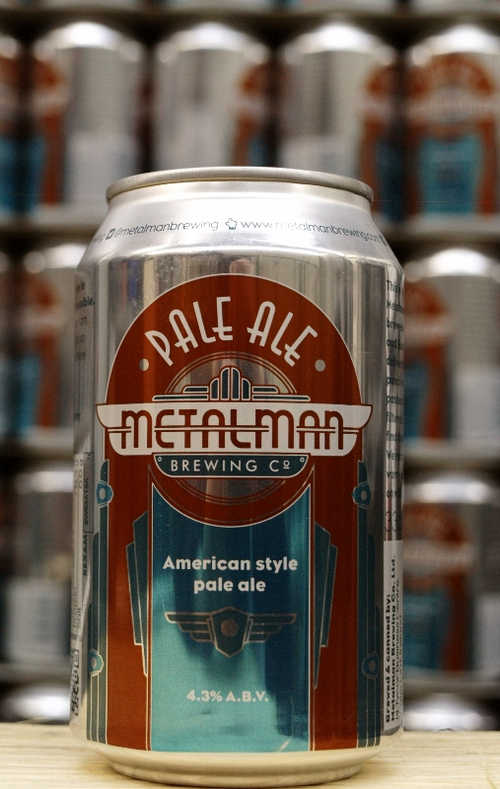
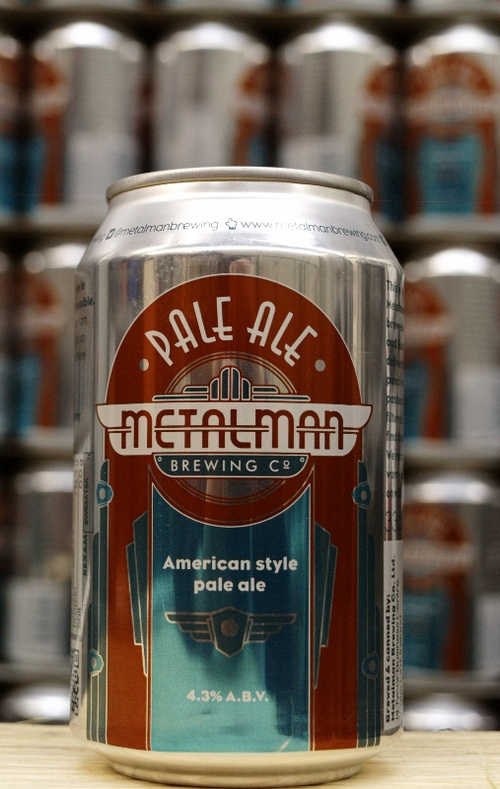 KRISTIN JENSEN - co-author of Slainte! The complete Guide To Irish Craft Beers and Ciders - introduces us to Metalman Pale Ale, from the first Irish microbrewery to can their beer instead of bottling it
KRISTIN JENSEN - co-author of Slainte! The complete Guide To Irish Craft Beers and Ciders - introduces us to Metalman Pale Ale, from the first Irish microbrewery to can their beer instead of bottling it
ABOUT THE BREWER
Born of a desire to see more beer produced by independent brewers in Ireland, Metalman Brewing is the brainchild of beer enthusiasts Gráinne Walsh and Tim Barber, who wanted to see better availability and choice of tasty, authentically Irish beer.
The name of the brewery is inspired by the famous Metal Man navigational aid on the Waterford coast, which was erected in 1823 and stands on one of three pillars overlooking the bay.
The first beer, Metalman Pale Ale, was brewed under contract at the White Gypsy Brewery and launched in March 2011. Production then moved to their own Waterford brewery in May 2012, housed in what used to be an old jute factory just outside the Waterford city centre.
In the spring of 2015, Metalman became the first craft brewery in Ireland to can their beer instead of bottling it. Their flagship Metalman Pale Ale, which is brewed all year round, is currently the only beer being canned. Their Hardknott Yerba Porter is available in bottles, the result of a collaboration brew with the Hardknott Brewery in Cumbria.
Regular seasonals (released around the same time every year) include Metalman Windjammer, an amber beer; Metalman Alternator, a wheat beer; Moonbeam, a dark beer with a light body; and Heat Sink, a smoked porter with a touch of cayenne pepper that was introduced in 2015.
The Chameleon range is their vehicle for experimentation – when they want to try something a bit different or a variation on a theme, they brand it under Chameleon. So far the range has included ginger, chilli, lime, wheat and lager 'and a multitude of dry hops'.
They brew something different every month, so check their website for current offerings as well as a list of the pubs and stockists where you can find the beers. You can also catch them at craft beer festivals around Ireland throughout the year, where they’re sure to have something interesting and unusual on offer.
ABOUT THE BEER
Beer style: Pale ale
ABV: 4.3%
Colour: Hazy dark gold
Serve in: Mug or pint glass
Matches well with: Burgers, cold meats, creamy pasta sauces, grilled meats, roast beef, roast chicken, ploughman’s lunch, quiche, Thai food
Metalman has been around long enough (since 2011) to be an old pro now, but they are back in the news again for being the first Irish microbrewery to can their beer instead of bottling it. And what gorgeous cans they are too, with their distinctive Art Deco branding.
Metalman brews a seasonal range of different beers, but this American-style pale ale is their flagship, produced all year round, and is currently the only one that’s available in cans.
It’s a hazy dark gold in the glass with a delicate white head that pours thick but then quickly bubbles away. That cloudiness is because the beer isn’t pasteurised or finely filtered, letting more of the flavour shine through.
The aroma is a direct forerunner to the flavour – both are fruity and floral. A first whiff is of peaches and apricot jam, giving way to the hoppy pine resin as it warms up after a few minutes. The flavour is a zesty grapefruit with grassy notes too, and an upfront, bracing bitterness. It’s very drinkable and refreshing and you’ll find yourself popping open a second can altogether too easily.
Pale ales are a great beer for matching with food because they pair well with so many different things. Try it with burgers, cold meats, creamy pasta sauces, grilled meats, roast beef, roast chicken, quiche, Thai food or my personal favourite, a hearty ploughman’s lunch.
When it comes to cheese, try a pale ale with a semi-soft white rind cheese, such as a Camembert or Brie. Closer to home, look for the Cooleeney, St Killian or Wicklow Baun Irish farmhouse cheeses. The hoppy bitterness of a pale ale is a good contrast to the buttery richness of the cheese.
 Kristin Jensen is a freelance editor specialising in cookery and food books and has worked with many of Ireland's top food writers and chefs. She writes the Edible Ireland blog and is a co-founder of the Irish Food Bloggers Association and, together with Caroline Hennessy, is joint author of Slainte! The complete Guide To Irish Craft Beers and Ciders .
Kristin Jensen is a freelance editor specialising in cookery and food books and has worked with many of Ireland's top food writers and chefs. She writes the Edible Ireland blog and is a co-founder of the Irish Food Bloggers Association and, together with Caroline Hennessy, is joint author of Slainte! The complete Guide To Irish Craft Beers and Ciders .
Stony Grey IPA - Beer of the Month
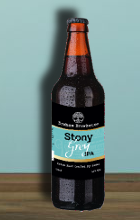
 KRISTIN JENSEN - co-author of Slainte! The complete Guide To Irish Craft Beers and Ciders - introduces us to Brehon Brewhouse Stony Grey IPA
KRISTIN JENSEN - co-author of Slainte! The complete Guide To Irish Craft Beers and Ciders - introduces us to Brehon Brewhouse Stony Grey IPA
ABOUT THE BREWER
Brehon Brewhouse is set amongst the rolling drumlins of Patrick Kavanagh country in County Monaghan – hence the inspiration for the names of their Stony Grey IPA and Shanco Dubh porter.
Open since April 2014 but already in the process of expanding, they are a true farmhouse brewery, based right on their farm outside of Carrickmacross in one of the old sheds behind their milking parlour.
As owners Seamus and Siobhán McMahon say themselves, ‘Our ambition is simple: we want to produce distinctive beers that reflect the trend towards all things craft and artisan. We hope to see these regularly paired with food but also very much enjoyed on their own.’
The emphasis on pairing beer with food comes from head brewer Phil Bizzell, who worked at the renowned L. Mulligan Grocer gastropub in Dublin, where his special interest was beer and food matching.
They currently produce a core range of four beers: Brehon Blonde, Killanny Red, Stony Grey IPA and the Shanco Dubh porter. You can find their beers in over 30 on-trade and off-trade outlets in Cavan, Monaghan, Louth and Dublin too.
If you’d like to get your hands on a bottle but don’t live in one of those counties, you can find it on some of the online Dublin off-licences that will deliver it directly to your door. Keep an eye out for it on draught and they’ve recently started experimenting with casks too. Or contact them to arrange a brewery tour and sampling session at their small on-site bar.
ABOUT THE BEER
Beer style: IPA
ABV: 6.0%
Colour: Cloudy golden orange
Serve in: IPA glass or pint glass
Matches well with: Curry, game, smoked fish or meat, spicy food, Mexican food, Thai food, Vietnamese food
This beer takes its name from a Patrick Kavanagh poem about Monaghan, called ‘Stony Grey Soil’. Given the bitter tone that cuts through that poem, it’s apt that the brewery named an IPA after it.
It has a frothy, crisp white head and plenty of lively carbonation in the glass, which helps those pillowy white bubbles to linger. As this is a bottle-conditioned beer, its golden orange colour is cloudy instead of clear.
The aroma isn’t the blast of piney hops that you might usually expect from an IPA. At first it’s of sweet bubblegum and fruit before more grassy and cedar notes creep in. There’s even a strong hint of talcum powder in there.
While a lot of IPAs these days have a tropical fruit profile, this one leans more towards the herbal, woody end of the spectrum, with some bitter orange pith coming through at the end. If you like IPAs but don’t want to be hit over the head with hops, then give this one a try.
IPAs are a classic match with spicy food as well as ethnic cuisines like Mexican, Indian, Thai and Vietnamese food. It’s also a good partner for game and smoked meat or fish, while the brewery themselves suggest pairing this IPA with chicken wings or even a lemon curd cake or Key Lime pie.
IPAs can stand up well to stronger cheeses. Try it with a hard cheese like a mature Coolea or Mossfield, or one of the farmhouse cheddars, such as Hegarty’s or Mount Callan. It’s also a good match for a blue cheese. In this case, you might be pleasantly surprised at how well it goes with a milder blue cheese like Wicklow Blue or the widely available Cashel Blue.
 Kristin Jensen is a freelance editor specialising in cookery and food books and has worked with many of Ireland's top food writers and chefs. She writes the Edible Ireland blog and is a co-founder of the Irish Food Bloggers Association and, together with Caroline Hennessy, is joint author of Slainte! The complete Guide To Irish Craft Beers and Ciders .
Kristin Jensen is a freelance editor specialising in cookery and food books and has worked with many of Ireland's top food writers and chefs. She writes the Edible Ireland blog and is a co-founder of the Irish Food Bloggers Association and, together with Caroline Hennessy, is joint author of Slainte! The complete Guide To Irish Craft Beers and Ciders .
Helvick Gold Irish Blonde Ale - Beer of the Month
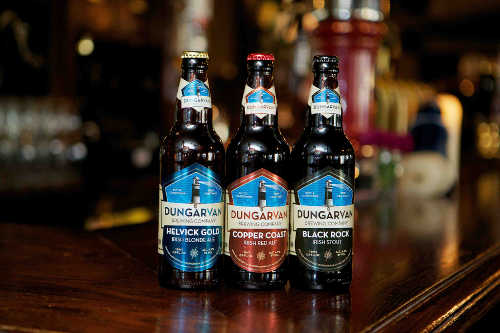
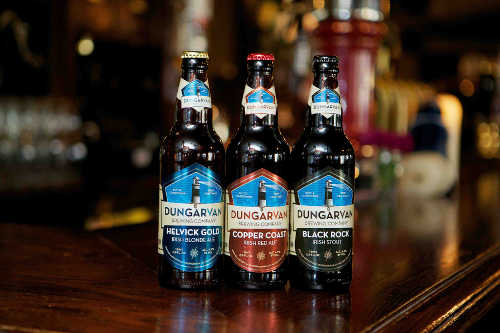 KRISTIN JENSEN - co-author of Slainte! The complete Guide To Irish Craft Beers and Ciders - introduces us to Dungarvan Brewing Company Helvick Gold Irish Blonde Ale
KRISTIN JENSEN - co-author of Slainte! The complete Guide To Irish Craft Beers and Ciders - introduces us to Dungarvan Brewing Company Helvick Gold Irish Blonde Ale
ABOUT THE BREWER
Dungarvan Brewing Company was founded by brothers-in-law Cormac O’Dwyer and Tom Dalton along with their wives, Jen and Claire, with a view to offering the Irish beer drinker a greater choice in craft beers, with an emphasis on quality, craft and tradition. They have become noted for their cask ales and bottle-conditioned beers.
Launched in April 2010, the brewery is located in the historic market town of Dungarvan, which has a rich history of brewing as well as a strong food culture, both in food production and a thriving restaurant scene.
All the beers are brewed in small batches using only four ingredients – barley, hops, yeast and water – and are vegan friendly. The beer is kept in its purest form by bottle-conditioning it, which means that a natural carbonation process occurs within the bottle that eliminates the need for the addition of further gas to the beers. It isn’t filtered or pasteurised, so there is minimum interference between the raw ingredients (including the limestone-rich water of west Waterford) and the finished product.
The draught offering is cask ale, dispensed by traditional hand pumps, which the brewery supplies to select pubs throughout Ireland as well as at a range of festivals and events during the year.
The core range started off with Black Rock Irish Stout, a dry stout; Copper Coast Irish Red Ale, a fruity red ale; and Helvick Gold Irish Blonde Ale, a generously hopped blonde ale. New additions include Mine Head American Pale Ale and Mahon Falls Rye Pale Ale, while seasonal beers include Comeragh Challenger Bitter and Coffee and Oatmeal Stout. They also make limited edition beers for festivals, such as a recent seaweed saison. Check their website for suggested beer and food pairings and recipes.
Dungarvan Brewing Company beers can be found throughout Ireland. The brewery is happy to accommodate tours as long as you contact them beforehand to arrange your visit.
ABOUT THE BEER
Beer style: Blonde ale
ABV: 4.9%
Colour: Cloudy orange
Serve in: Mug, pint glass or stange
Are you new to craft beer and don’t know where to start without overwhelming your taste buds? Give this blonde ale a go. Or if you’re a regular craft beer drinker, this blonde ale will come into its own now that warmer weather is beckoning and you’re looking for something refreshing to sip or to pair with your seafood or serve at your next barbecue. At this point, Dungarvan Brewing Company is a seasoned pro in the Irish craft brewing scene and their Irish Blonde Ale is an oldie but goodie.
Blonde ales are a light ale ranging in colour from straw to deep golden. They tend to be only slightly bitter and a bit toasty, but as the brewer says themselves, ‘our blonde ale is not a bland ale’. This one has sharp citrus aromas of kumquat and lemon with a resinous, floral undertone. The taste is of marmalade, malt and biscuits with a hoppy sting in the tail that keeps things interesting.
The flavour is given added complexity by the fact that it’s bottle conditioned, which means it has a yeasty sediment in the bottom of the bottle and is naturally carbonated. Do you drink that sediment or pour it down the drain? It’s up to you, but it does contain some B vitamins, amino acids and minerals – a nicer way of getting your RDA than taking a pill.
Blonde ales are great thirst-quenchers when the sun comes out, but their mild flavour means they also pair beautifully with the lighter dishes you’ll want to eat now, like seafood, salads and chicken, as well as spicy food. They also complement mild cheeses like a fresh goat’s cheese or Toonsbridge Buffalo Mozzarella or a semi-soft white rind cheese like Cooleeney, St Killian or Wicklow Baun. But if it’s a contrast you’re after, then the brewery recommends a smoked cheese.
 Kristin Jensen is a freelance editor specialising in cookery and food books and has worked with many of Ireland's top food writers and chefs. She writes the Edible Ireland blog and is a co-founder of the Irish Food Bloggers Association and, together with Caroline Hennessy, is joint author of Slainte! The complete Guide To Irish Craft Beers and Ciders .
Kristin Jensen is a freelance editor specialising in cookery and food books and has worked with many of Ireland's top food writers and chefs. She writes the Edible Ireland blog and is a co-founder of the Irish Food Bloggers Association and, together with Caroline Hennessy, is joint author of Slainte! The complete Guide To Irish Craft Beers and Ciders .
Black Donkey Brewing Sheep Stealer Irish Farmhouse Ale - Beer of the Month
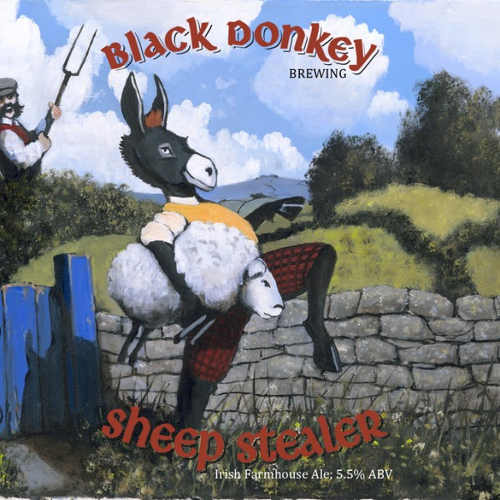
 KRISTIN JENSEN, co-author of Slainte! The complete Guide To Irish Craft Beers and Ciders, introduces us to ‘ the little black dress of beer’, the Black Donkey Brewing Sheep Stealer Irish Farmhouse Ale - and a pair of brewers who are particularly interested in working with chefs to align their beers with food.
KRISTIN JENSEN, co-author of Slainte! The complete Guide To Irish Craft Beers and Ciders, introduces us to ‘ the little black dress of beer’, the Black Donkey Brewing Sheep Stealer Irish Farmhouse Ale - and a pair of brewers who are particularly interested in working with chefs to align their beers with food.
ABOUT THE BREWERY
It’s a reflection of how far Irish beer drinkers have come that a microbrewery from the Midlands launched with a funky saison as their flagship beer in 2014. Black Donkey also brew an amber ale, called Buck It, and there are plans for other beers too.
Production began in mid-2014 in the heart of County Roscommon, with husband-and-wife team Richard Siberry and Michaela Dillon bringing Irish, European, American and historical brewing influences together under one roof.
After living in New York for twenty years and learning from the burgeoning craft beer scene in the US, these two Irish expats returned home to set up their own craft brewery after years of home brewing experiments in their basement.
Richard and Michaela’s work backgrounds run the gamut from lumberjacking to IT systems management with stints in finance, filmmaking and costume design in between.
Their work has taken them from Ireland to the US, Australia, Switzerland and even Mongolia, leaving them with a keen thirst for new experiences and flavours of all kinds, which they want to translate into their farmhouse ales.
They are particularly interested in working with chefs to align their beers with food.
![]() ABOUT THE BEER
ABOUT THE BEER
Beer style: Saison
ABV: 5.6%
Colour: Cloudy gold
Serve in: Pint or tulip glass
Matches well with: Brunch, grilled chicken, Indian food, Mexican food, mussels, pork, salads, seafood, sausages, Thai food, Vietnamese food
As beers go, saison was made for summer – literally. Saison is a Belgian-style farmhouse ale that was originally brewed in the winter and then set aside for the farm workers to enjoy in the hot summer months.
Pouring this one into a glass reveals its cloudy gold colour and a thick head of creamy white bubbles, but do be careful when you pour it. This is an unfiltered, bottle-conditioned beer, which means there’s a good dose of yeasty sediment in the bottom of the bottle and you might prefer not to have that in your glass.
There’s nothing wrong with drinking that sediment, though – in fact, it contains B vitamins, amino acids and minerals, so you could think of it as a nicer way of getting some of your RDA than popping a pill.
But back to the beer itself. It has a yeasty, honeyed, apricot aroma with a little spicy, peppery zip. If you didn’t know what you were drinking you’d be forgiven for thinking that this saison is a wheat beer, as it has that same yeasty, bready, lemony tang. The flavour is more lime zest than lemon, though, and it has a pleasantly bitter finish to balance the maltiness.
Dry, crisp and refreshing, the Sheep Stealer Irish Farmhouse Ale is true to the saison style and is very, very drinkable. And I’m not the only one who thinks son: Black Donkey took home Silver for Sheep Stealer in the Belgian Style Ale category at the Killarney Beerfest competition last month.
When it comes to food, saison is the little black dress of beer – its versatility means it’s a good match for just about anything. Black Donkey Brewing says their saison “pairs beautifully with all manner of dishes, from tangy dressed salads and ripe cheeses, to grilled roasted and stewed meats.
Hearty roasted root vegetables will also shine in Sheep Stealer’s company. Bring it to the barbecue or to a sophisticated formal dinner, or simply enjoy it with great company or an inspiring view.”
I suggest you also try it with Indian food, Mexican food, mussels, pork, salads, seafood, sausages, Thai food, Vietnamese food – the sky is the limit. Or try it with an Alpine cheese, such as Gruyere.
 Secretary of the Irish Food Writers’ Guild, Kristin Jensen is a freelance editor specialising in cookery and food books and has worked with many of Ireland's top food writers and chefs. She writes the Edible Ireland blog and is a co-founder of the Irish Food Bloggers Association and, together with Caroline Hennessy, is joint author of Slainte! The complete Guide To Irish Craft Beers and Ciders .
Secretary of the Irish Food Writers’ Guild, Kristin Jensen is a freelance editor specialising in cookery and food books and has worked with many of Ireland's top food writers and chefs. She writes the Edible Ireland blog and is a co-founder of the Irish Food Bloggers Association and, together with Caroline Hennessy, is joint author of Slainte! The complete Guide To Irish Craft Beers and Ciders .
Galway Hooker Irish Dark Lager - Beer of the Month
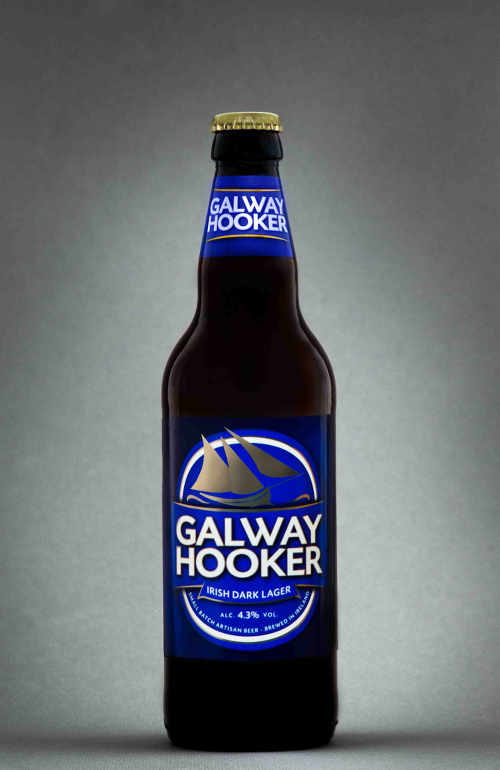
 KRISTIN JENSEN, co-author of Slainte! The complete Guide To Irish Craft Beers and Ciders, introduces us to Galway Hooker Irish Dark Lager
KRISTIN JENSEN, co-author of Slainte! The complete Guide To Irish Craft Beers and Ciders, introduces us to Galway Hooker Irish Dark Lager
ABOUT THE BREWERY
Galway Hooker Brewery is an independent artisan west of Ireland brewery, dedicated to the production of high-quality, natural and full-flavoured beers. Their beers have received numerous awards, including being twice named as Ireland’s Best Beer by Beoir.org, an Irish beer consumer group.
Originally established in Roscommon, they are now based near Galway city and have installed a new brewery where they host regular tours and tastings. The brewery was established in 2006 by first cousins, Aidan Murphy and Ronan Brennan. Aidan has over 10 years’ experience in the brewing industry and has worked in several breweries around the world as well as holding a master’s degree in Brewing and Distilling. Galway Hooker was the first microbrewery to produce a pale ale in Ireland and it is available on draught and in bottles nationwide.
Their passion for real beer and their boredom with insipid, mass-produced yellow fizz (otherwise known as lager) inspired them to start a brewery and produce an original and great-tasting alternative for the Irish market. The beer is produced using traditional brewing techniques using only four natural ingredients: malt, hops, yeast and water - and nothing else. Through Galway Hooker, they aim to celebrate diversity, individuality and creativity.
If you’re wondering where the name comes from, in 2006 they ran a website competition in which the public were asked to name their flagship beer. Out of the thousands of nominations received, Galway Hooker was eventually selected. Thus the brewery is named after the Galway Hooker - a much-loved traditional wooden boat with distinctive red sails, designed for transporting cargo around Galway Bay and Connemara in strong and shallow seas.
In 2014 its bottled IPA was awarded a gold medal (in the beer category) at the Irish Food Awards (Blas na hEireann). In addition to their original flagship pale ale, the brewery also now produces a stout, a dark larger and an India Pale Ale as well as seasonal beers.
Scheduled tours of the brewery take place on a regular basis. Contact the brewery or check their website for details.
ABOUT THE BEER
Beer style: Lager
ABV: 4.3%
Colour: Amber
Serve in: Pint glass, pilsner glass, stange, tulip glass or mug
Matches well with: BBQ, burgers, chicken, pizza, seafood, Mexican food, mildly spicy food
Summertime and the sippin’ is easy – which calls for a lighter beer like a lager. The Irish Dark Lager from Galway Hooker is a good one to stock up on during these last few weeks of summer.
It pours a light amber in the glass with a thin film of bubbles that quickly fizzles away. The aroma has lots of sweet brown sugar and citrus with a little whiff of honeydew melon too. Taste wise, it has all the usual hallmarks of a good lager – dry, crisp, with a malty backbone that’s punctuated by a distinctive hop bitterness. The trademark bready, biscuit flavour of a usual lager has a little added complexity here given this beer’s darker roast, which adds a nice nutty, caramel element.
Summer barbecues cry out for a good lager. It’s a great all-rounder beer that will pair well with just about anything you throw at it, whether it’s a burger, grilled chicken, sausages or seafood, especially if you’re slathering everything with the same barbecue sauce, which will probably be both sweet and acidic. And at only 4.3% ABV, you can have a few over the course of an afternoon and evening and not be the worse for wear because of it.
If you want to pair a cheese with a lager, think along the same lighter lines and go for a mild, fresh cheese like a goat or sheep milk cheese or a creamy mozzarella. The key thing here is that you don’t want to overpower the delicate flavours of such mild cheeses.
--
 Secretary of the Irish Food Writers’ Guild, Kristin Jensen is a freelance editor specialising in cookery and food books and has worked with many of Ireland's top food writers and chefs. She writes the Edible Ireland blog and is a co-founder of the Irish Food Bloggers Association and, together with Caroline Hennessy, is joint author of Slainte! The complete Guide To Irish Craft Beers and Ciders .
Secretary of the Irish Food Writers’ Guild, Kristin Jensen is a freelance editor specialising in cookery and food books and has worked with many of Ireland's top food writers and chefs. She writes the Edible Ireland blog and is a co-founder of the Irish Food Bloggers Association and, together with Caroline Hennessy, is joint author of Slainte! The complete Guide To Irish Craft Beers and Ciders .
St Mel's Brewing Company Brown Ale - Beer of the Month
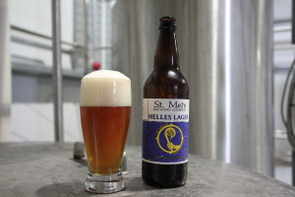
 KRISTIN JENSEN, co-author of Slainte! The complete Guide To Irish Craft Beers and Ciders, introduces us to St Mel’s Brewing Company Brown Ale
KRISTIN JENSEN, co-author of Slainte! The complete Guide To Irish Craft Beers and Ciders, introduces us to St Mel’s Brewing Company Brown Ale
ABOUT THE BREWERY
St Mel’s Brewing Company is an independent Irish-owned brewery founded by Liam Hanlon and Eoin Tynan in 2014. If Liam’s name rings a bell, it’s because he was previously the head brewer at Carlow Brewing Company. Eoin Tynan is new to the industry, though – he has a background in international investment with a masters in business management, but crucially, he has a love of craft beer too.
The brewery is named after St Patrick’s nephew, Mel, who helped spread knowledge and learning throughout the Irish Midlands in the 5th century. Now St Mel’s Brewing Company is hoping to spread the word about craft beer and make you a convert if you aren’t already. Their core range of beers includes a pale ale, helles lager and brown ale as well as some seasonal specials.
ABOUT THE BEER
Beer style: Brown ale
ABV: 5.2%
Colour: Cola brown
Serve in: Mug or pint glass
Matches well with: BBQ, cured meat, game, mushrooms, ploughman’s lunch, pork, red meat, steak, stews
With the pendulum swinging back to shorter, cooler days, thoughts inevitably turn from the golden lagers and sparkling pilsners of summer to the darker beers of autumn and winter. A brown ale is the perfect beer to bridge the gap between the seasons.
A standard brown ale is a mild ale that ranges in colour from copper to deep brown or mahogany and has a sweet, nutty, malty flavour with hints of toffee. This one from St Mel’s is all that and more.
It’s a cola-coloured shade of brown with a blink-and-you’ll-miss-it film of bubbles and a metallic, smoky aroma with lots of dark roasted malt, burnt coffee and dark brown sugar too. That peaty smokiness carries through to the flavour, which is also underpinned by chocolate and a citrus tang of hops. If you like smoky whiskies, you’ll like this beer. The judges at the Killarney Beerfest liked it too – they gave it a silver medal in 2015.
Brown ale is a good match for the foods you’re probably starting to crave around now, like autumnal mushrooms, game and stew. But if the weather holds out for one last BBQ, the smokiness of this particular brown ale would stand up well to a grilled steak with plenty of char.
When it comes to cheese, a brown ale pairs well with an Alpine cheese (Hibernia and St Gall are two good Irish farmhouse examples). But out of all the ways to match beer and cheese, my favourite pairing is a brown ale with a hard cheese like Coolea, Hegarty’s Cheddar, Mossfield or Mount Callan Cheddar – heaven.
--
 Secretary of the Irish Food Writers’ Guild, Kristin Jensen is a freelance editor specialising in cookery and food books and has worked with many of Ireland's top food writers and chefs. She writes the Edible Ireland blog and is a co-founder of the Irish Food Bloggers Association and, together with Caroline Hennessy, is joint author of Slainte! The complete Guide To Irish Craft Beers and Ciders .
Secretary of the Irish Food Writers’ Guild, Kristin Jensen is a freelance editor specialising in cookery and food books and has worked with many of Ireland's top food writers and chefs. She writes the Edible Ireland blog and is a co-founder of the Irish Food Bloggers Association and, together with Caroline Hennessy, is joint author of Slainte! The complete Guide To Irish Craft Beers and Ciders .
Craigie's Ballyhook Flyer Irish Cider - Beer of the Month
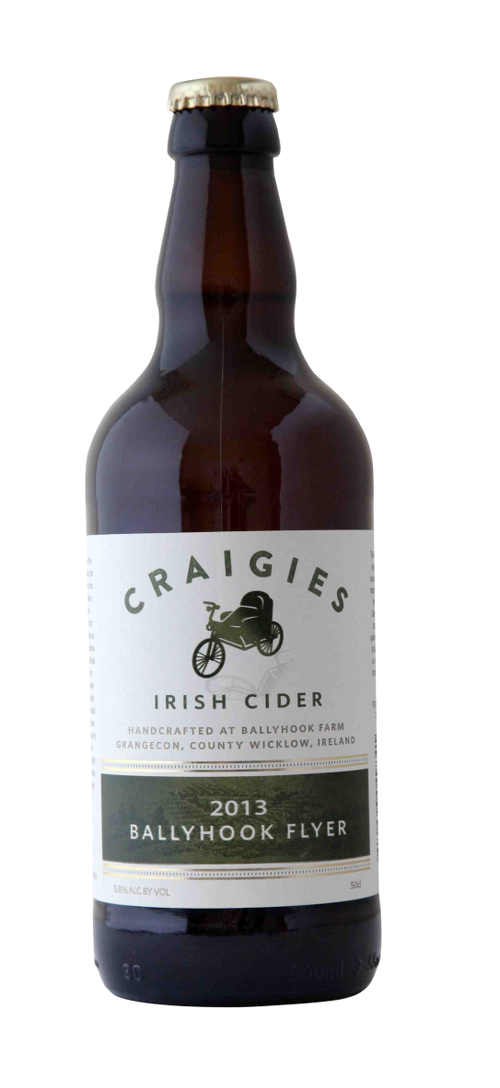
 KRISTIN JENSEN, co-author of Slainte! The complete Guide To Irish Craft Beers and Ciders, celebrates autumn by introducing us to Craigie’s Ballyhook Flyer Irish Cider
KRISTIN JENSEN, co-author of Slainte! The complete Guide To Irish Craft Beers and Ciders, celebrates autumn by introducing us to Craigie’s Ballyhook Flyer Irish Cider
ABOUT THE CIDER MAKER
Faced with a lack of vines in Ireland but an abundance of apples, what’s a specialist with twenty years’ experience in the industry and a diploma in wine-making to do? Making cider was the obvious choice for Simon Tyrrell, who teamed up with Angus Craigie in 2011 to produce their flagship cider, Ballyhook Flyer, on Angus’s farm in Co Wicklow.
Simon concentrates on the fermentation side of things while Angus looks after the processing and logistics end. Ralf Högger, Emma Tyrrell and Alan Garrioch round out the team at Craigies with their different skill sets, from wine tasting to marketing and plenty more.
Simon’s wife, Emma Tyrrell, also set up Cider Ireland, a group of craft cider producers.
Craigies added a second cider, Dalliance, made entirely from dessert apples, in 2014. Their cider is made with 100% Irish apples from five counties around the island.
ABOUT THE CIDER
Cider style: Medium-dry
ABV: 5.8%
Matches well with: Any kind of pork, apple desserts, roasted root vegetables, chicken, seafood
Just as you don’t expect wine to taste like grapes or beer to taste like barley, there is more to cider than just apples. A cider can of course taste appley, but it might only have the merest suggestion of apples.
Cider can also have flavours and aromas of citrus fruit, wine or even the characteristic smoky bacon flavour of a traditional dry English cider. Evaluating cider is very similar to the way you approach beer, with the same factors coming into play: appearance, aroma, taste and texture.
The Ballyhook Flyer is Craigies’s take on a Breton-style, dry sparkling cider. Medium-dry ciders like Ballyhook Flyer have more body and a smoother mouthfeel than a dry cider, with a little sweetness too for balance. This one is crisp and tart with a long finish, which makes it particularly well suited to drinking alongside food.
Like any cider, it matches beautifully with pork – Craigies recommends trying it with a slow-cooked pork belly or duck confit. Apple dessert is another intuitive match. Cider also matches well with chicken dishes, seafood and roasted root vegetables.
Hard cheese and cider are a classic pairing, but there are a lot more options to play with than just the usual Cheddar. Medium-dry ciders like Ballyhook Flyer go nicely with Camembert-style cheese like Cooleeney or Wicklow Baun, while the cider makers themselves recommend trying it with Durrus or Adrahan.
And, despite what certain marketing campaigns might lead you to believe, a good craft cider should not be served with ice. Cold kills flavour and the melting ice will dilute it, so it’s not the best way to appreciate a good drink. Cellar temperature is perfect for cider, though lightly chilled is fine too. Putting a bottle of cider in the fridge half an hour before you want to drink it should do the trick.
--
 Secretary of the Irish Food Writers’ Guild, Kristin Jensen is a freelance editor specialising in cookery and food books and has worked with many of Ireland's top food writers and chefs. She writes the Edible Ireland blog and is a co-founder of the Irish Food Bloggers Association and, together with Caroline Hennessy, is joint author of Slainte! The complete Guide To Irish Craft Beers and Ciders .
Secretary of the Irish Food Writers’ Guild, Kristin Jensen is a freelance editor specialising in cookery and food books and has worked with many of Ireland's top food writers and chefs. She writes the Edible Ireland blog and is a co-founder of the Irish Food Bloggers Association and, together with Caroline Hennessy, is joint author of Slainte! The complete Guide To Irish Craft Beers and Ciders .
Rascal's Brewing Company Ginger Porter - Beer of the Month
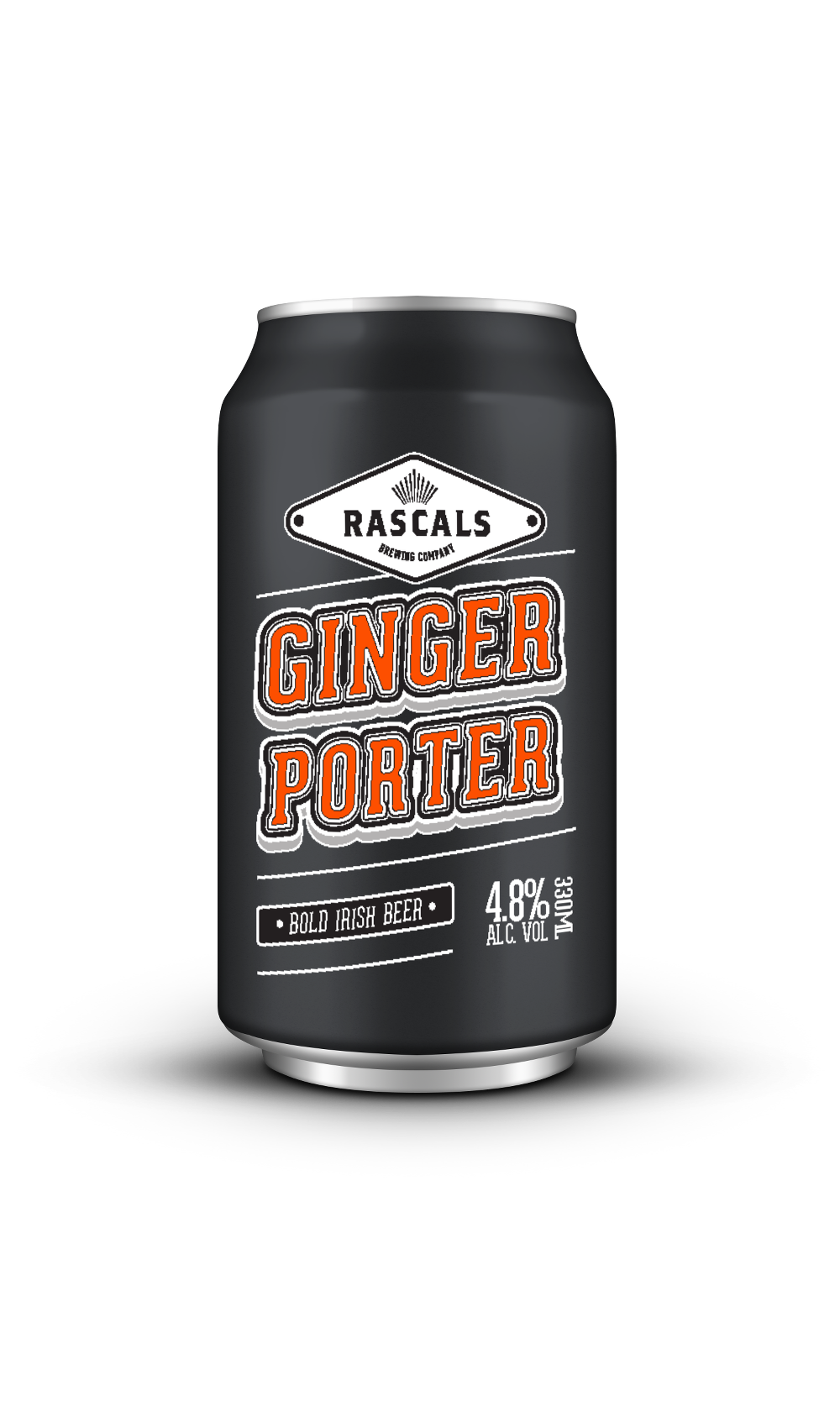
 KRISTIN JENSEN, co-author of Slainte! The complete Guide To Irish Craft Beers and Ciders - introduces us to Rascal’s Brewing Company Ginger Porter
KRISTIN JENSEN, co-author of Slainte! The complete Guide To Irish Craft Beers and Ciders - introduces us to Rascal’s Brewing Company Ginger Porter
ABOUT THE BREWER
Like many other Irish brewers, owners Emma Devlin and Cathal O’Donoghue’s love of good craft beer began abroad, when they were living in New Zealand. After returning to Ireland, not one but two home brewing competition awards in 2013 spurred them to make the leap into brewing professionally. They started off by contract brewing with Brú Brewery in County Meath before moving to their own premises in Rathcoole, and they haven’t looked back.
The Rascal’s self-styled mission is ‘to continually brew many different styles of beer and to bring something new and exciting to the Irish craft beer scene’. They hit the ground running through the introduction of their ginger porter and a spin on it, a chocolate ginger porter, both of which won awards at the Alltech International Beer Convention in 2014.
Other regulars include Big Hop Red and Wit Woo, a Belgian wheat beer that’s so good, even people who don’t usually go for wheat beers like it. They push the envelope with seasonal beers, including their World Hop Series, which so far has featured New Zealand, German, American, Czech and Australian hops.
For the past couple of years it’s been hard to find Rascal’s beer outside of Dublin, but that is set to change now that they’ve started canning their beers as of December 2015. Keep your eyes peeled for them in your off-license and snap them up when you see them. They’re one to watch – and now, increasingly, enjoy.
ABOUT THE BEER
Beer style: Porter
ABV: 4.8%
Matches well with: Berries, chocolate, ginger biscuits, mince pies, black pudding, oysters
If, like me, you can’t get to the pub or a beer festival very often, a Rascal’s beer has been a rare treat. But that is set to change now that they’ve started canning their beer – and the arrival of their ginger porter in particular is perfectly timed for Christmas. The first time I tried it, at a festival on a sunny, hot summer’s day in 2014, all I could think was how good it would be with a mince pie in December. And you know what? It was every bit as good as I hoped it would be.
The aroma is full of chocolate syrup, treacle and vanilla with only the merest hint of spicy ginger underneath it all. It’s light bodied, yet it has a smooth, creamy mouthfeel thanks to the oats in it, with trademark porter flavours of coffee but hardly any bitterness at all. If you didn’t know the ginger was in there you could easily miss it, but it does give it a lovely warming lift at the back of your throat.
When it comes to matching this ginger porter with food, I would shy away from the usual combos like beef, game or roasts – they would overpower this porter, which is on the lighter end of the spectrum. It would do well, though, paired with black pudding or sweet, briny oysters. And at this time of year, you couldn’t do better than a glass of this with a ginger biscuit, a square of chocolate or best of all, a mince pie. I also wouldn’t be averse to serving it as a contrast to a salty blue cheese.
--
 Secretary of the Irish Food Writers’ Guild, Kristin Jensen is a freelance editor specialising in cookery and food books and has worked with many of Ireland's top food writers and chefs. She writes the Edible Ireland blog and is a co-founder of the Irish Food Bloggers Association and, together with Caroline Hennessy, is joint author of Slainte! The complete Guide To Irish Craft Beers and Ciders .
Secretary of the Irish Food Writers’ Guild, Kristin Jensen is a freelance editor specialising in cookery and food books and has worked with many of Ireland's top food writers and chefs. She writes the Edible Ireland blog and is a co-founder of the Irish Food Bloggers Association and, together with Caroline Hennessy, is joint author of Slainte! The complete Guide To Irish Craft Beers and Ciders .
O Brother Brewing Joe Coffee Porter - Beer of the Month
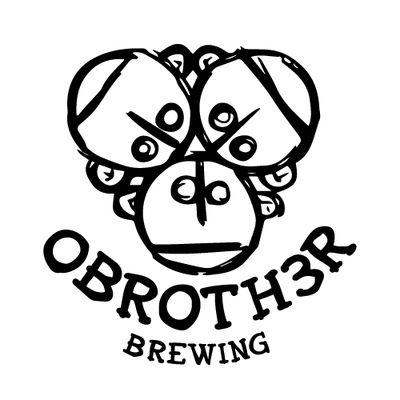
 KRISTIN JENSEN, co-author of Slainte! The complete Guide To Irish Craft Beers and Ciders - introduces us to O Brother Brewing Joe Coffee Porter
KRISTIN JENSEN, co-author of Slainte! The complete Guide To Irish Craft Beers and Ciders - introduces us to O Brother Brewing Joe Coffee Porter
ABOUT THE BREWER
As the clever name suggests, O Brother Brewing is run by three brothers – Barry, Brian and Padhraig O’Neill from Bray, Co. Wicklow – who rolled their first keg out of their Kilcoole brewery at the end of 2014.
Their initial offerings included The Chancer American Pale Ale, The Fixer Red Ale and The Sinner IPA, but they are already experimenting with other beers too, such as the Brutus Double IPA (at a hefty 9.1%) or Joe Coffee Porter. So far the emphasis is on lots of flavour, with high ABVs to go with it. It’s one to watch to see how the brewery and the beers grow and develop.
ABOUT THE BEER
Beer style: Porter
ABV: 6.1%
Matches well with: Beef, berries, black pudding, burgers, chocolate, roasted and smoked meats, steak, stew
At this time of year there are still plenty of heavy-hitting winter seasonal beers lining the shelves, and one of the most popular ones seems to be a coffee stout or porter, with several Irish microbreweries offering versions.
Coffee and stout are two of my favourite things, so combining them into one drink is a match made in heaven as far as I’m concerned. Many porters and stouts have espresso notes in them anyway, so adding coffee often just accentuates what was already there.
This porter pours a ruby brown in the glass with a thin cap of light brown bubbles that quickly disappears. One whiff reveals all sorts of different sweet things: treacle, vanilla, dark muscovado sugar, caramel and golden syrup are all in there.
There’s nothing subtle about the flavour. It’s full-on dark roasted coffee, lots of malt and lots of treacle carried over from the aroma, finished off with a bitter, tangy smack on the palate. This is not the kind of beer where the coffee blends quietly into the background, which is good news if, like me, you love a good, strong coffee. O Brother gets theirs from Coffee Mojo, a small batch artisan coffee roaster located near the brewery in Co. Wicklow.
At 6.1% ABV, it’s in keeping with what seems to be the tradition for O Brother beers, which tend to have similarly high ABVs. It’s on the strong end of the spectrum for a porter, which is usually lighter in style and alcohol than its big brother, stout.
With so much flavour, you’ll need some robust food to match with it. Any kind of beef would be good, especially a juicy burger with all the trimmings or a hearty stew. I wouldn’t be averse to drinking this alongside a few squares of a good-quality dark chocolate either.
As for a cheese, you’ll need one with plenty of flavour to stand up to all the flavour in this beer. A wedge of salty Bellingham Blue would hold its own, as would a mature cheddar.
--
 Secretary of the Irish Food Writers’ Guild, Kristin Jensen is a freelance editor specialising in cookery and food books and has worked with many of Ireland's top food writers and chefs. She writes the Edible Ireland blog and is a co-founder of the Irish Food Bloggers Association and, together with Caroline Hennessy, is joint author of Slainte! The complete Guide To Irish Craft Beers and Ciders .
Secretary of the Irish Food Writers’ Guild, Kristin Jensen is a freelance editor specialising in cookery and food books and has worked with many of Ireland's top food writers and chefs. She writes the Edible Ireland blog and is a co-founder of the Irish Food Bloggers Association and, together with Caroline Hennessy, is joint author of Slainte! The complete Guide To Irish Craft Beers and Ciders .
Clever Man Ejector Seat Turf Smoked Stout - Beer of the Month
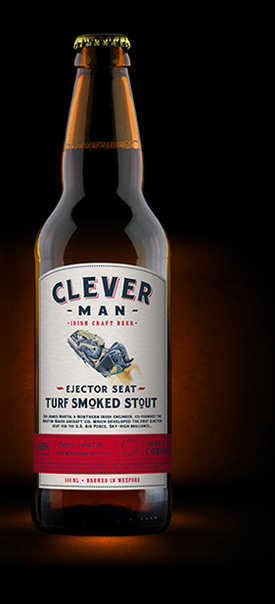
 KRISTIN JENSEN, co-author of Slainte! The complete Guide To Irish Craft Beers and Ciders - introduces us to Clever Man Ejector Seat Turf Smoked Stout
KRISTIN JENSEN, co-author of Slainte! The complete Guide To Irish Craft Beers and Ciders - introduces us to Clever Man Ejector Seat Turf Smoked Stout
ABOUT THE BREWER
Founded by Malcolm and Andrea Molloy, Drew Fox Brewing is Wexford’s newest Irish craft brewery. Malcolm, a Dublin native, lived in the US for many years and met his Texan wife Andrea in Chicago. Malcolm and Andrea own a pub in Chicago called The Grafton Pub & Grill, so it’s not surprising that when they moved back to Ireland in 2010, the burgeoning craft beer industry here piqued their interest.
The beers are sold under the name Clever Man, after ‘four clever Irish men and their inventions’. The range currently includes the Atractor kolsch-style beer, 12 Ft Under Amber Ale, Little Willie Tank American Pale Ale and Ejector Seat Turf Smoked Stout. They are also hoping to offer brewery tours in the future.
ABOUT THE BEER
Beer style: Stout
ABV: 4.5%
Matches well with: Beef, berries, black pudding, burgers, chocolate, roasted and smoked meats, steak, stew
This beer captures the quintessential Irish fireside in ‘a rich stout uniquely infused with the scent of a traditional turf fire’, so if you’re looking for a taste of Ireland, this is it.
In keeping with their theme of naming their beers after ‘clever Irish men and their inventions’, this beer is named after Sir James Martin, a Northern Irish engineer who co-founded the Martin-Baker Aircraft Co., which developed the first ejector seat for the US Air Force.
The turf smoke is quite prevalent in the aroma as well as on the palate, but it’s nicely balanced with vanilla and coffee and a tangy, dry finish. It’s light-bodied and has an ABV of only 4.5%, so it’s an easy-drinking stout despite those big smoky flavours.
Even though it has a sessionably low ABV, this probably isn’t the kind of beer you want to drink on its own. It would play well with robust food; anything light would get overpowered.
Burgers, steak, a beef stew or even a dark chocolate dessert would all be good matches, and anything charred or grilled would pick up on the turf in the beer. As for cheese, you’ll need something strong to hold its own against beer, so go for a bold match like a blue cheese or the most mature hard cheese you can get your hands on.
--
 Secretary of the Irish Food Writers’ Guild, Kristin Jensen is a freelance editor specialising in cookery and food books and has worked with many of Ireland's top food writers and chefs. She writes the Edible Ireland blog and is a co-founder of the Irish Food Bloggers Association and, together with Caroline Hennessy, is joint author of Slainte! The complete Guide To Irish Craft Beers and Ciders .
Secretary of the Irish Food Writers’ Guild, Kristin Jensen is a freelance editor specialising in cookery and food books and has worked with many of Ireland's top food writers and chefs. She writes the Edible Ireland blog and is a co-founder of the Irish Food Bloggers Association and, together with Caroline Hennessy, is joint author of Slainte! The complete Guide To Irish Craft Beers and Ciders .
Hail Glorious Saint Patrick Extra Stout - Beer of the Month

 KRISTIN JENSEN, co-author of Slainte! The complete Guide To Irish Craft Beers and Ciders - introduces us to Jack Cody’s Brewery Hail Glorious Saint Patrick Extra Stout
KRISTIN JENSEN, co-author of Slainte! The complete Guide To Irish Craft Beers and Ciders - introduces us to Jack Cody’s Brewery Hail Glorious Saint Patrick Extra Stout
ABOUT THE BREWER
In 2014, Geoff Fitzpatrick opened his brewery in his hometown of Drogheda, County Louth. It’s the first brewery in the town for over 50 years, ever since William Cairnes closed in 1960.
Geoff launched with two beers, Smiggy Amber Ale and Puck Pilsner. Since then he has expanded the range to include an IPA, a cream stout and perhaps most interesting of all, a grapefruit tea pale ale. The brewery also offers seasonals such as a summer saison, a Samhain brown ale or an extra stout for Saint Patrick’s Day. Geoff is not afraid of big, bold flavours in his beers, making this brewery one to watch.
ABOUT THE BEER
Beer style: Stout
ABV: 6.3%
Matches well with: Beef, berries, black pudding, burgers, chocolate, roasted and smoked meats, steak, stew
With a name like Hail Glorious Saint Patrick, this is the seasonal beer to keep your eye out for this month.
The aroma is of cola and lots of vanilla, which makes sense once you read the label and see that the beer was brewed with Madagascan vanilla pods. (For the record, the label also says the beer includes espresso beans, Boyne water and “a pinch of craic”.) Those espresso beans come into play in the flavour, which is of bitter black coffee and treacle, with a dry finish.
This beer has very little carbonation, which makes it a bit cloying if you’re drinking it on its own – but that’s just a good excuse to pair this with some hearty food like beef or stew before the weather warms up and we move on to lighter beers and lighter fare.
As for cheese, you’ll need something good and strong to stand up to this extra stout. The salty Bellingham Blue or Cashel Blue would both provide a good contrast to the sweetness of this beer, as would a mature hard cheese like Coolea or a strong farmhouse Cheddar.
--
 Secretary of the Irish Food Writers’ Guild, Kristin Jensen is a freelance editor specialising in cookery and food books and has worked with many of Ireland's top food writers and chefs. She writes the Edible Ireland blog and is a co-founder of the Irish Food Bloggers Association and, together with Caroline Hennessy, is joint author of Slainte! The complete Guide To Irish Craft Beers and Ciders .
Secretary of the Irish Food Writers’ Guild, Kristin Jensen is a freelance editor specialising in cookery and food books and has worked with many of Ireland's top food writers and chefs. She writes the Edible Ireland blog and is a co-founder of the Irish Food Bloggers Association and, together with Caroline Hennessy, is joint author of Slainte! The complete Guide To Irish Craft Beers and Ciders .
Boom Derry Pale Ale - Beer of the Month
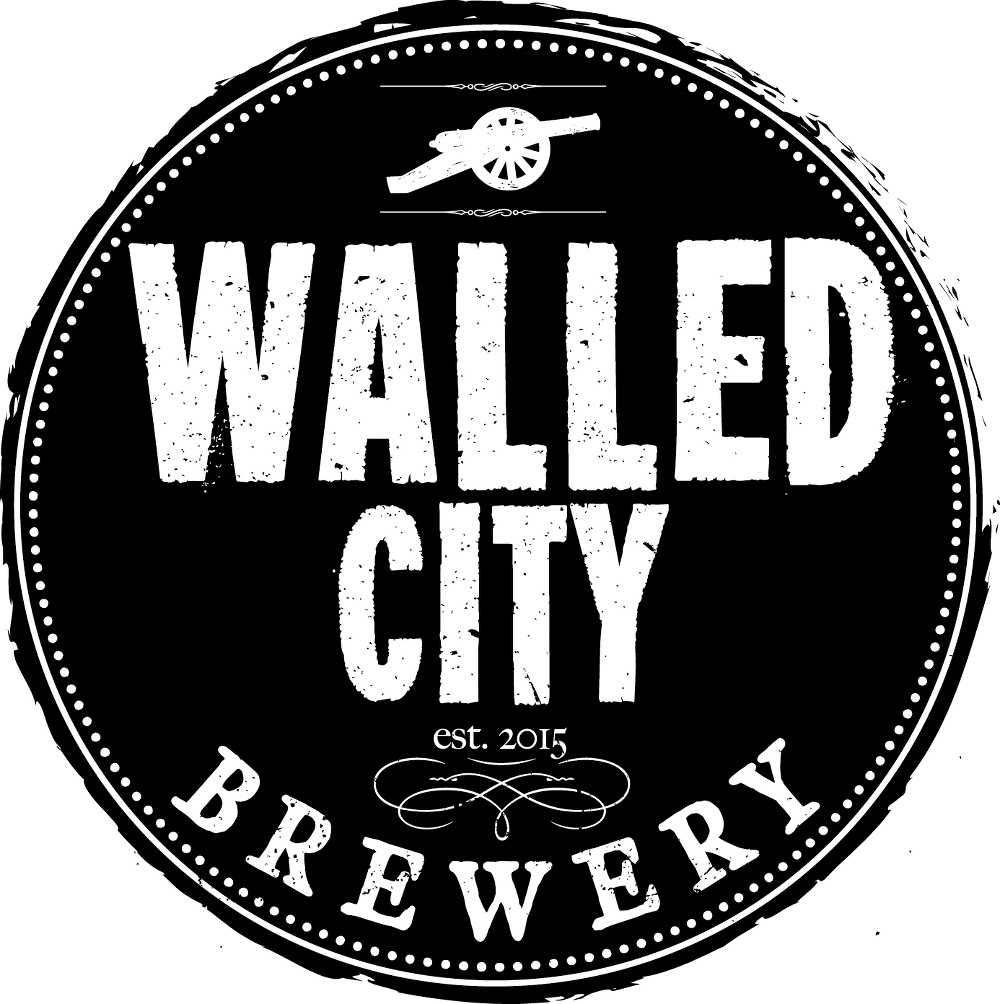
 KRISTIN JENSEN, co-author of Slainte! The complete Guide To Irish Craft Beers and Ciders - introduces us to Walled City Brewery Boom Derry Pale Ale
KRISTIN JENSEN, co-author of Slainte! The complete Guide To Irish Craft Beers and Ciders - introduces us to Walled City Brewery Boom Derry Pale Ale
ABOUT THE BREWER
Launched at the Culturetech Craft Beer Festival in 2014, the Walled City Brewery is an ambitious new venture and the first craft brewery in the city centre for over 100 years. It’s a craft brewery and restaurant in the same building – the old military pay office on Ebrington Square, which dates back to 1890 – which is a first for Northern Ireland.
The idea behind the business is to give both locals and tourists a taste of the north-west ‘through crafting local, authentic, premium quality, flavoursome beer and food’. And what with celebrating the Year of Food and Drink in Northern Ireland 2016, it couldn’t have arrived at a better time. They’re off to a flying start too, scooping the Best Newcomer and Best Gastro Pub awards in the 2016 Irish Restaurant Awards.
The business is a real family act. Owner James Huey is a qualified diploma brewer. Before launching his own business he worked at Guinness for 12 years doing product development, so there is a wealth of knowledge and experience going into the beers he brews. Meanwhile, James’s wife Louise looks after human resources and his sister, Jill McKillop, is the executive chef in the restaurant.
The brewery currently produces four beers: Boom Derry Pale Ale, Stitch India Pale Ale, Kicks Pilsner and Wit Wheat Beer. For a complete taste of Northern Ireland, Walled City Brewery is a must-visit.
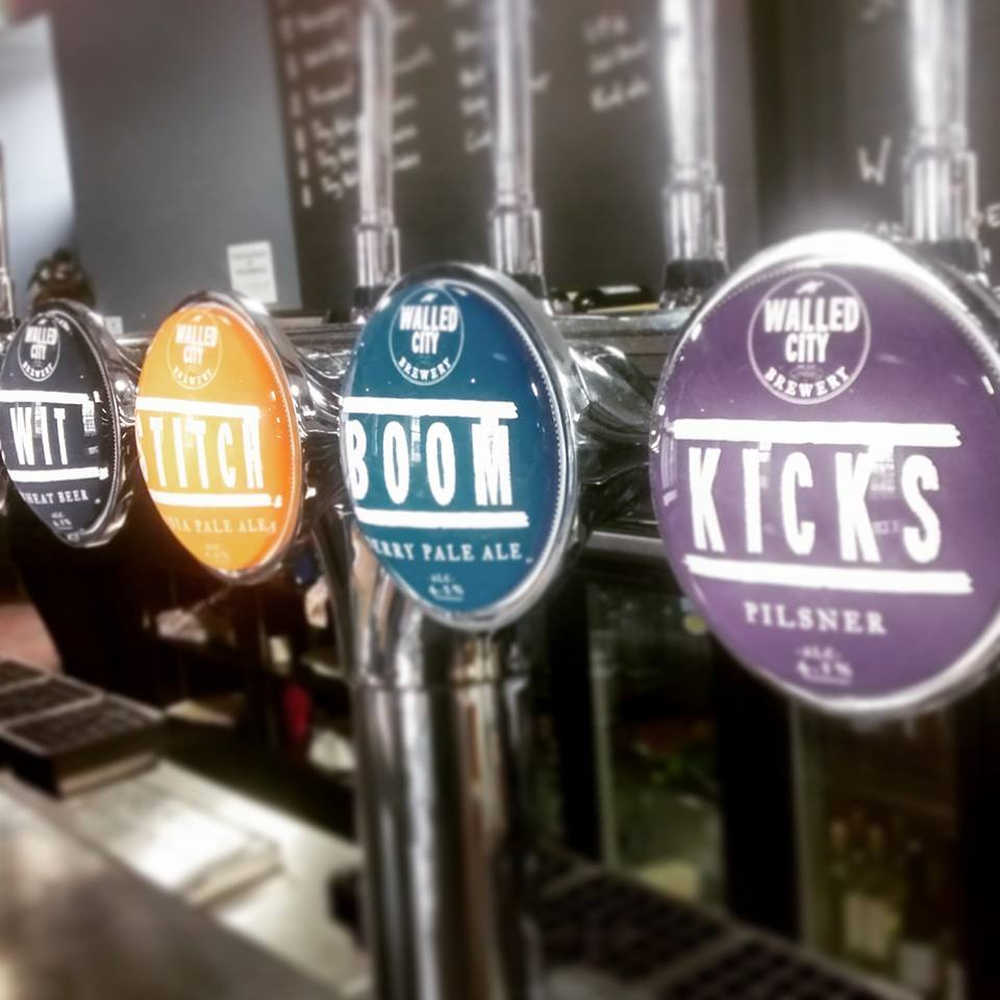 ABOUT THE BEER
ABOUT THE BEER
Calling it a new category of craft beer, brewer James Huey says of his Boom Derry Pale Ale, ‘We have always done things differently in the North West, so why stop a good thing!’ The name Boom refers to the breaking of the boom during the Siege of Derry.
As for the ‘Derry pale ale’ category, if you didn’t know what you were drinking, you could be forgiven for thinking it was an IPA on the mild end of the spectrum. The aroma is classically tropical, with lots of pineapple and mango, while the flavour is similarly tropical and refreshing, with that trademark bitter bite.
And at only 4.2% ABV, this beer is just as good for sessionable sipping as it is for matching with food. If you do want to enjoy it with a meal, spicy food, Mexican food, Thai food and Vietnamese food would all be good matches. Or better yet, why not call in to the Walled City Brewery the next time you’re in Derry and enjoy it with some of the food in their very own restaurant?
--
 Secretary of the Irish Food Writers’ Guild, Kristin Jensen is a freelance editor specialising in cookery and food books and has worked with many of Ireland's top food writers and chefs. She writes the Edible Ireland blog and is a co-founder of the Irish Food Bloggers Association and, together with Caroline Hennessy, is joint author of Slainte! The complete Guide To Irish Craft Beers and Ciders .
Secretary of the Irish Food Writers’ Guild, Kristin Jensen is a freelance editor specialising in cookery and food books and has worked with many of Ireland's top food writers and chefs. She writes the Edible Ireland blog and is a co-founder of the Irish Food Bloggers Association and, together with Caroline Hennessy, is joint author of Slainte! The complete Guide To Irish Craft Beers and Ciders .
Kilmegan Wild Elderflower-Infused Cider - Beer of the Month
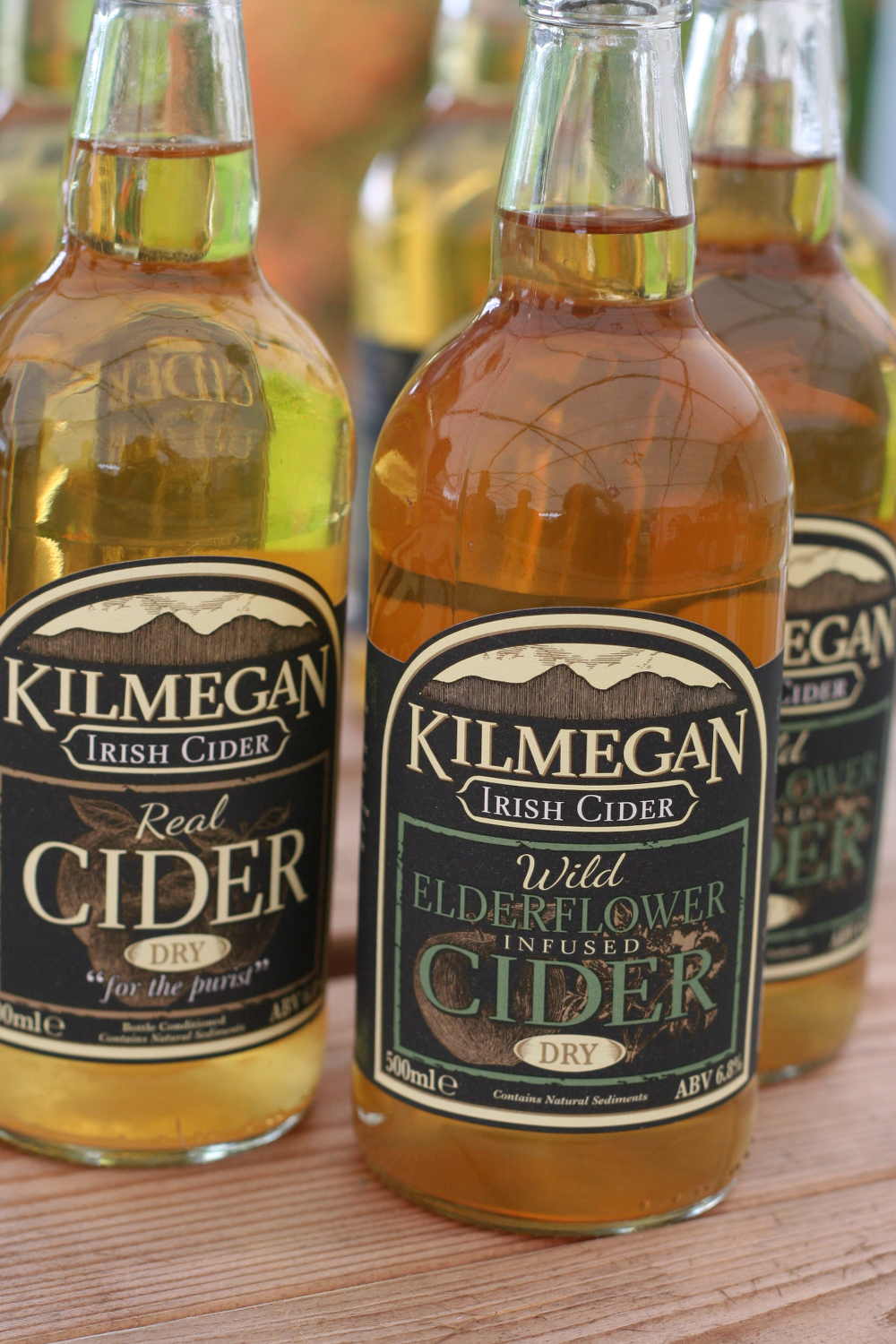
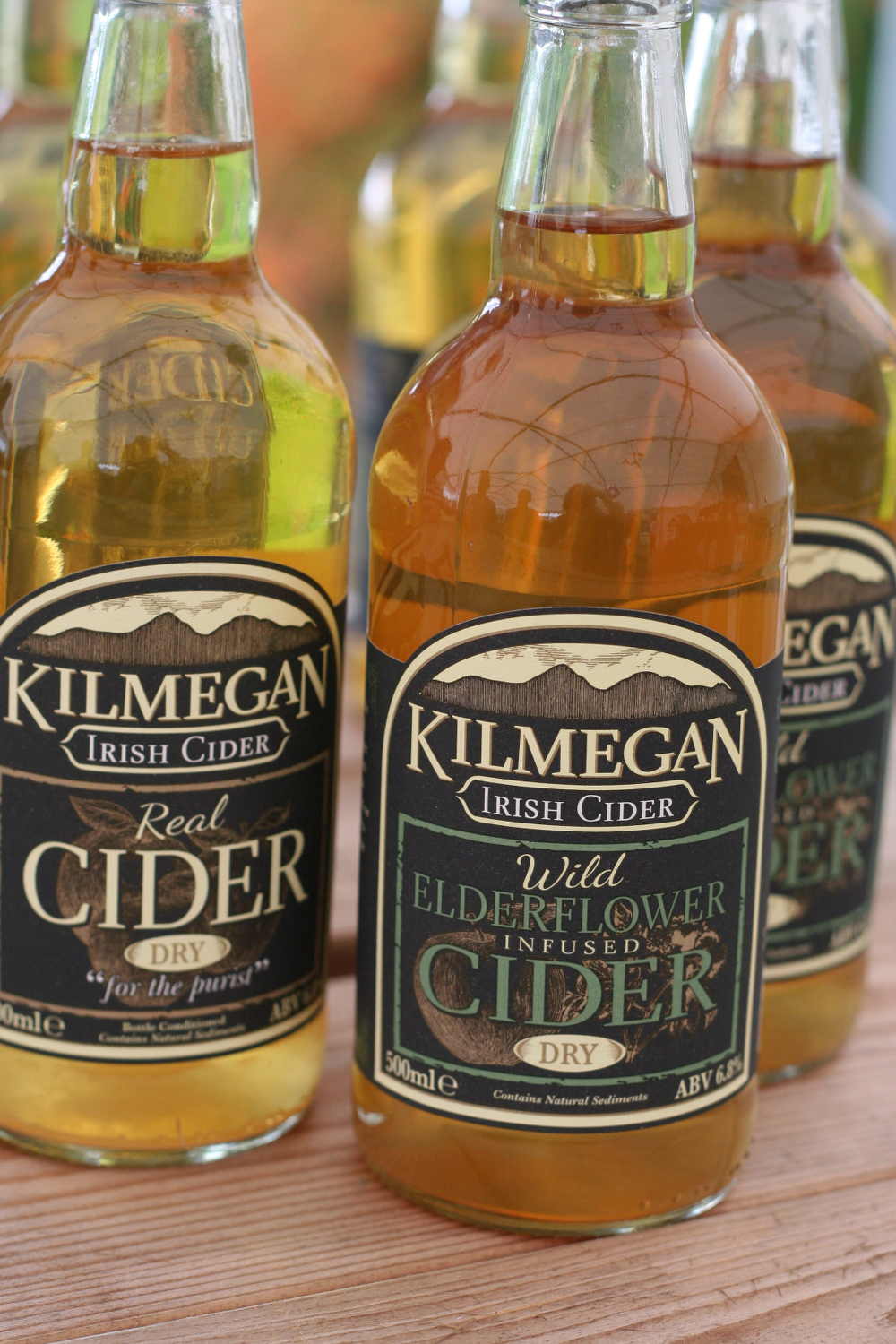 KRISTIN JENSEN, co-author of Slainte! The complete Guide To Irish Craft Beers and Ciders - introduces us to Kilmegan Wild Elderflower-Infused Cider
KRISTIN JENSEN, co-author of Slainte! The complete Guide To Irish Craft Beers and Ciders - introduces us to Kilmegan Wild Elderflower-Infused Cider
ABOUT THE CIDER MAKER
The origins of Kilmegan Irish Cider sound like something out of a fairytale: in 1967, Andrew Boyd’s father discovered a 70-year-old orchard hidden underneath a six-metre-high wall of brambles next to the farmhouse he and his wife had bought in the shadow of the Mourne Mountains.
Andrew grew up eating those apples, but fast forward to 2009, when he and his own wife threw some fresh-pressed apple juice and champagne yeast into a demijohn, stuck on an airlock and came back a few months later to find cider.
These days they use a traditional apple mill and a rack and cloth press to make their range of ciders, still using apples from Andrew’s father’s small orchard. They make three different ciders: Irish Farmhouse Cider, Real Cider and Wild Elderflower-Infused Cider
ABOUT THE CIDER
This drink combines two quintessential summertime classics, cider and elderflower. It bills itself as a medium cider, and it strikes a good balance between sweet and dry, making this a good crowd pleaser for your next summertime get-together.
The sweetness is to the forefront, but it quickly gives way to a dry, tannic finish. Unlike mass-produced fruit-flavoured ciders, the elderflower in this one is very subtle, only revealing itself after a few sips. And at only 4% ABV, it’s the perfect drink to while away a summer afternoon and evening with.
When it comes to food matching, this cider would pair particularly well with pork – think BBQ sausages or pan-fried pork chops – but the subtle sweetness of the elderflower means it would also be lovely alongside an apple dessert or a hard cheese like Hegarty’s Cheddar, Mount Callan Cheddar or a wedge of mature Coolea.
--
 Kristin Jensen is a freelance editor specialising in cookery and food books and has worked with many of Ireland's top food writers and chefs. She writes the Edible Ireland blog and is a co-founder of the Irish Food Bloggers Association and, together with Caroline Hennessy, is joint author of Slainte! The complete Guide To Irish Craft Beers and Ciders .
Kristin Jensen is a freelance editor specialising in cookery and food books and has worked with many of Ireland's top food writers and chefs. She writes the Edible Ireland blog and is a co-founder of the Irish Food Bloggers Association and, together with Caroline Hennessy, is joint author of Slainte! The complete Guide To Irish Craft Beers and Ciders .
Boyne Brewhouse Long Arm Dortmunder Export - Beer of the Month
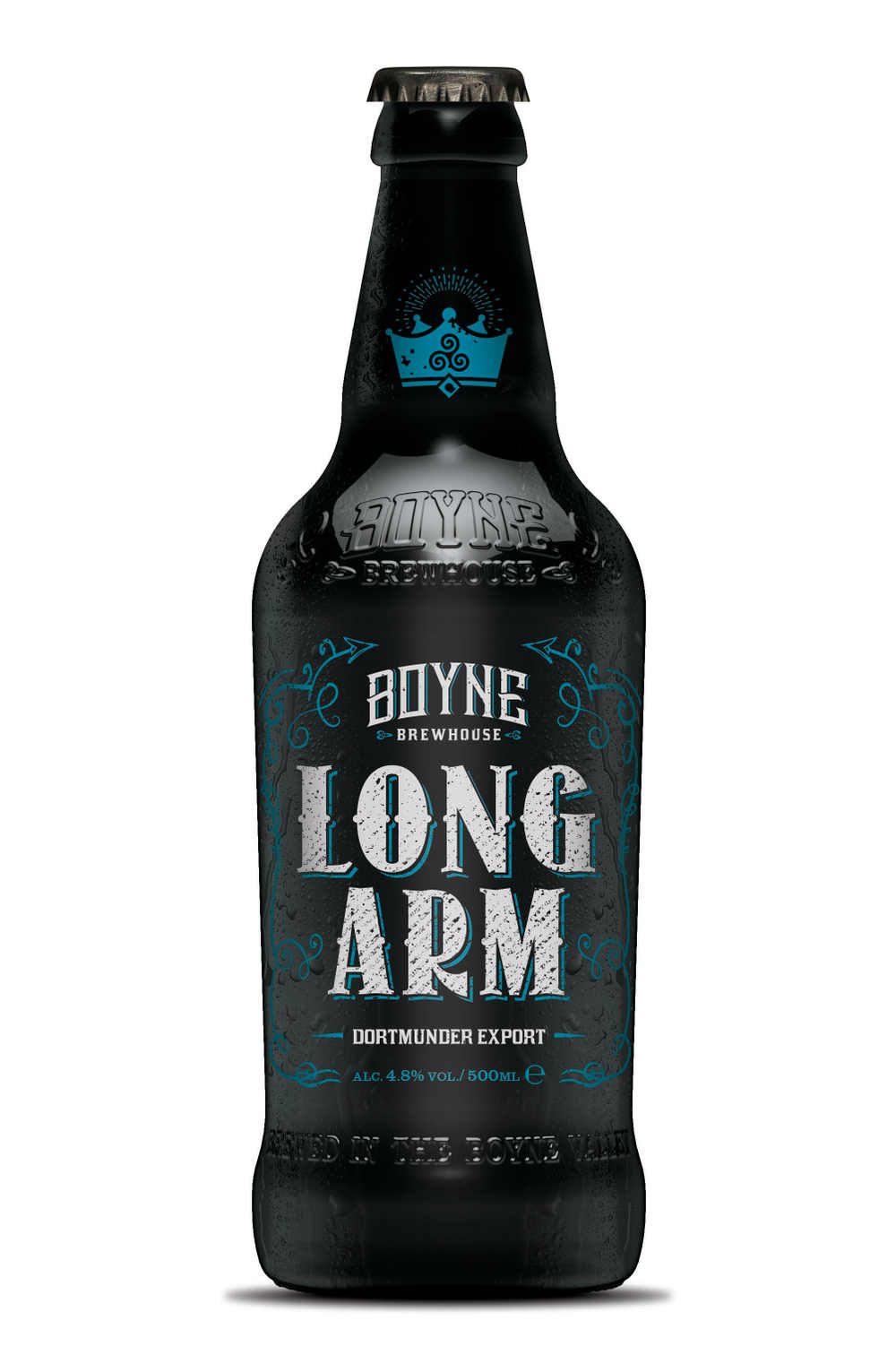
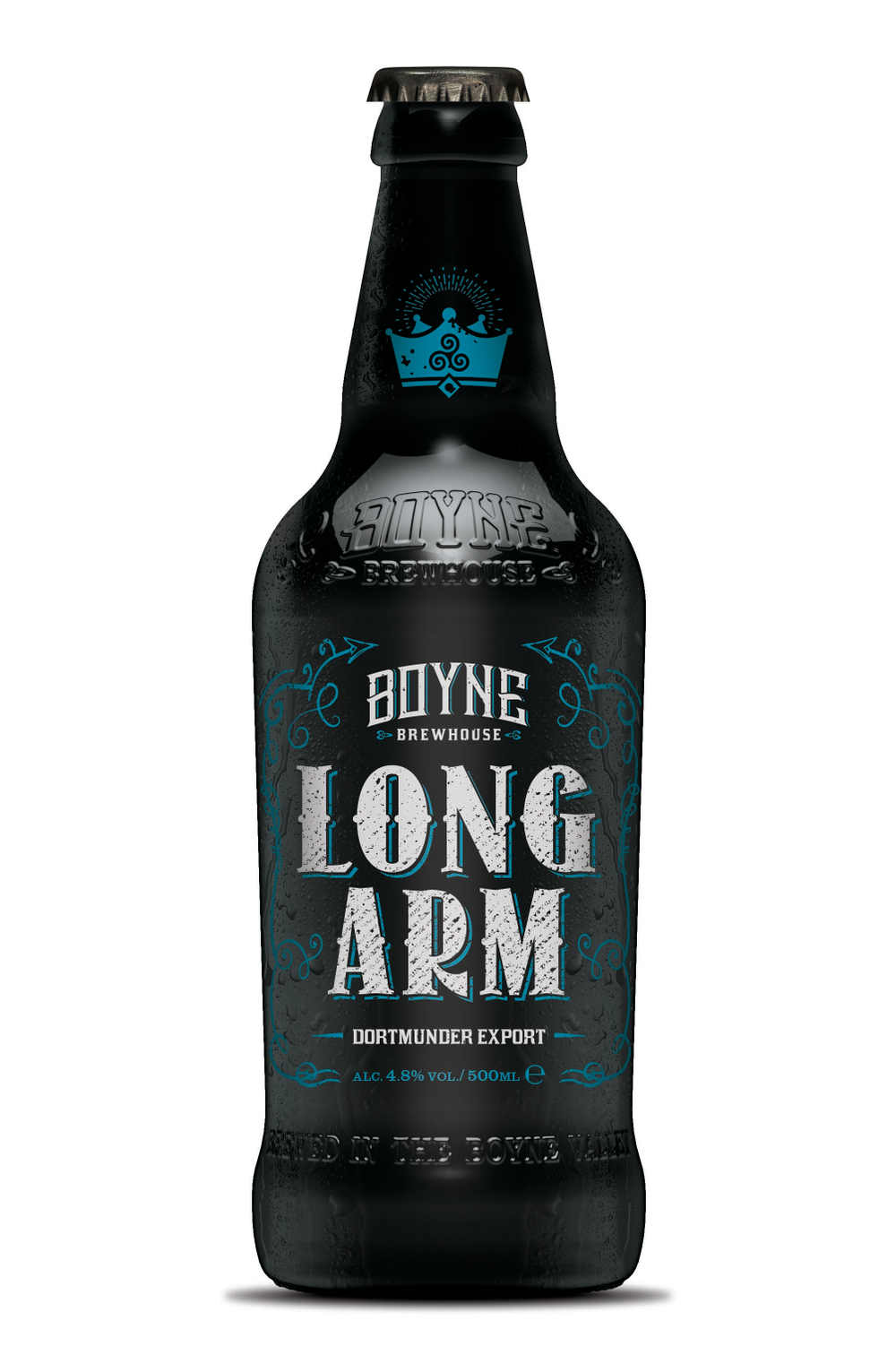 KRISTIN JENSEN, co-author of Slainte! The complete Guide To Irish Craft Beers and Ciders - introduces us to Boyne Brewhouse Long Arm Dortmunder Export
KRISTIN JENSEN, co-author of Slainte! The complete Guide To Irish Craft Beers and Ciders - introduces us to Boyne Brewhouse Long Arm Dortmunder Export
ABOUT THE BREWER
The Boyne Brewhouse is a new state-of-the-art, family-owned craft brewery located on the outskirts of Drogheda, just off the M1 motorway. Their debut range of bottled craft beers includes Born in a Day Australian Pale Ale, Long Arm Dortmunder Export and Pagan’s Pillar Sparkling Copper Ale, with seasonal and specialty beers to follow.
The Boyne Brewhouse craft brewery is part of the Boann Distillery and Visitor Centre, an ambitious project and Ireland’s only combined distillery and brewery that will produce craft whiskey and gin as well as beer.
Head brewer and Galway native Áine O’Hora graduated from Heriot Watt, the prestigious UK brewing college, then honed her craft for seven years as a brewer with Matilda Bay (CUB), Australia’s most awarded craft brewery. This experience has paid off, with the Boyne Brewhouse beers already winning awards.
The Boann Distillery and Boyne Brewhouse are the realisation of a long-held ambition of the Cooney family, who have a long tradition in the Irish drinks industry. Pat Cooney built the Gleeson Group to be a major player in the Irish manufacturing and wholesale drinks business over the last 40 years. Pat is a native of Drogheda, so the establishment of a new industry in his hometown is a homecoming for him. Pat, his wife Marie and four of their children are all actively involved in running the business.
ABOUT THE BEER
In the summer, sales of stout plummet and lighter beers like lager and pilsner come into their own. This Dortmunder Export pilsner is one such beer, a German style of beer that is also known as the ‘labourer’s pilsner’.
It has many of the classic hallmarks of a traditional pilsner: a softly sparkling lemon yellow colour and a bright white cap of bubbles (though the head isn’t as creamy and pillowy as other pilsners) and is crisp and dry, with lots of bready, yeasty notes from the malt backbone and plenty of hop bite from the Saaz hops.
There’s the barest hint of lime in the aroma and the flavour is well balanced between the malt and hops, meaning it’s just as nice to drink on its own as it would be alongside food. And at 4.8% ABV, it’s a good sessionable choice for your next BBQ or summer get-together.
As for the name, it comes from the stomping grounds where the brewery is located, in the historic Boyne Valley, home of Cúchulainn. The brewer says, ‘Folklore tells that “Lugh of the Long Arm” was the spiritual father of Cúchulainn as well as an infamous spearsman and battle warrior.’
A pilsner is an intuitive match to summer foods such as salads, seafood and other lighter foods like chicken that won’t overpower the beer. It also pairs particularly well with Asian, Thai and Indian food as well as spicy food.The brewer says it matches perfectly with prawns and crab or a spicy curry.
Or check out the Boyne Brewhouse website for a few recipes that match particularly well with the beer, provided by the nearby Eastern Seaboard Bar & Grill.
When it comes to cheese, it’s much the same as food matching – this beer will be nicely matched with a mild, fresh cheese like Ardsallagh Goat Cheese or Toonsbridge Mozzarella.
--
 Kristin Jensen is a freelance editor specialising in cookery and food books and has worked with many of Ireland's top food writers and chefs. She writes the Edible Ireland blog and is a co-founder of the Irish Food Bloggers Association and, together with Caroline Hennessy, is joint author of Slainte! The complete Guide To Irish Craft Beers and Ciders .
Kristin Jensen is a freelance editor specialising in cookery and food books and has worked with many of Ireland's top food writers and chefs. She writes the Edible Ireland blog and is a co-founder of the Irish Food Bloggers Association and, together with Caroline Hennessy, is joint author of Slainte! The complete Guide To Irish Craft Beers and Ciders .
Long Meadow Oak Aged Irish Craft Cider - Beer of the Month
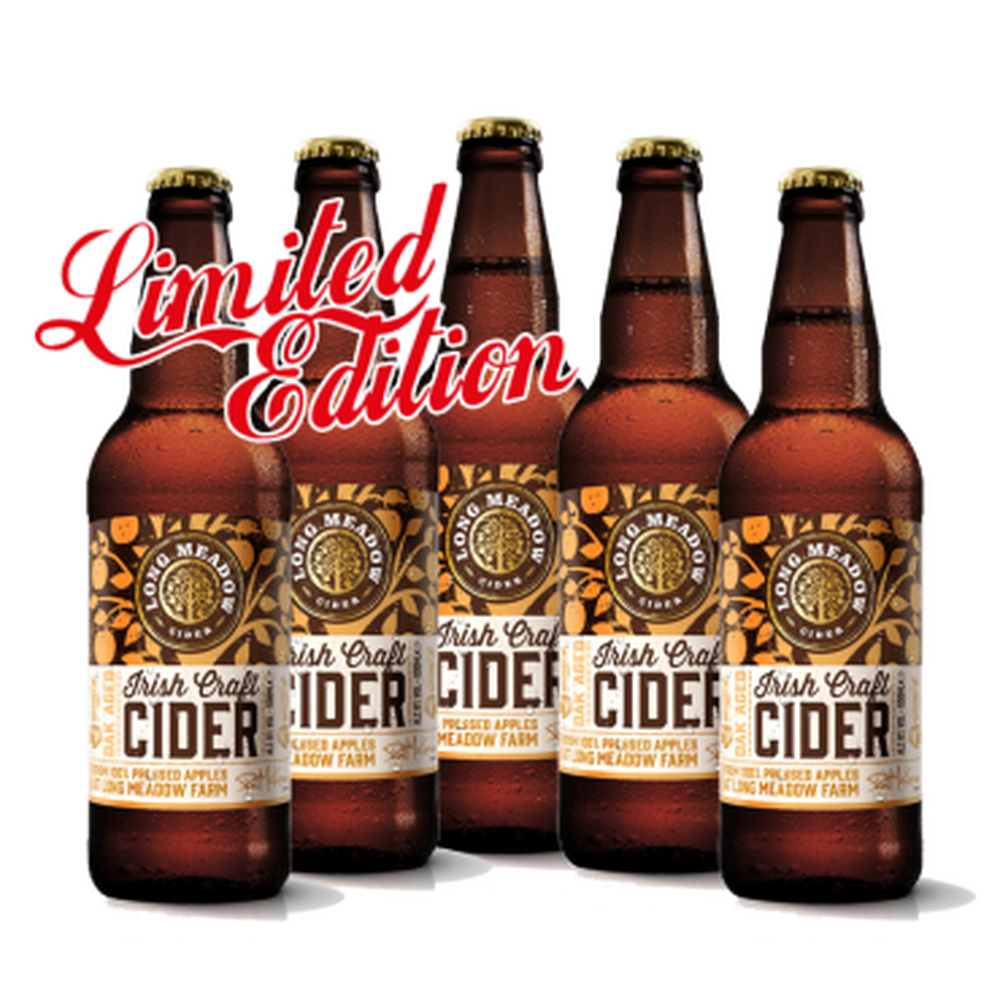
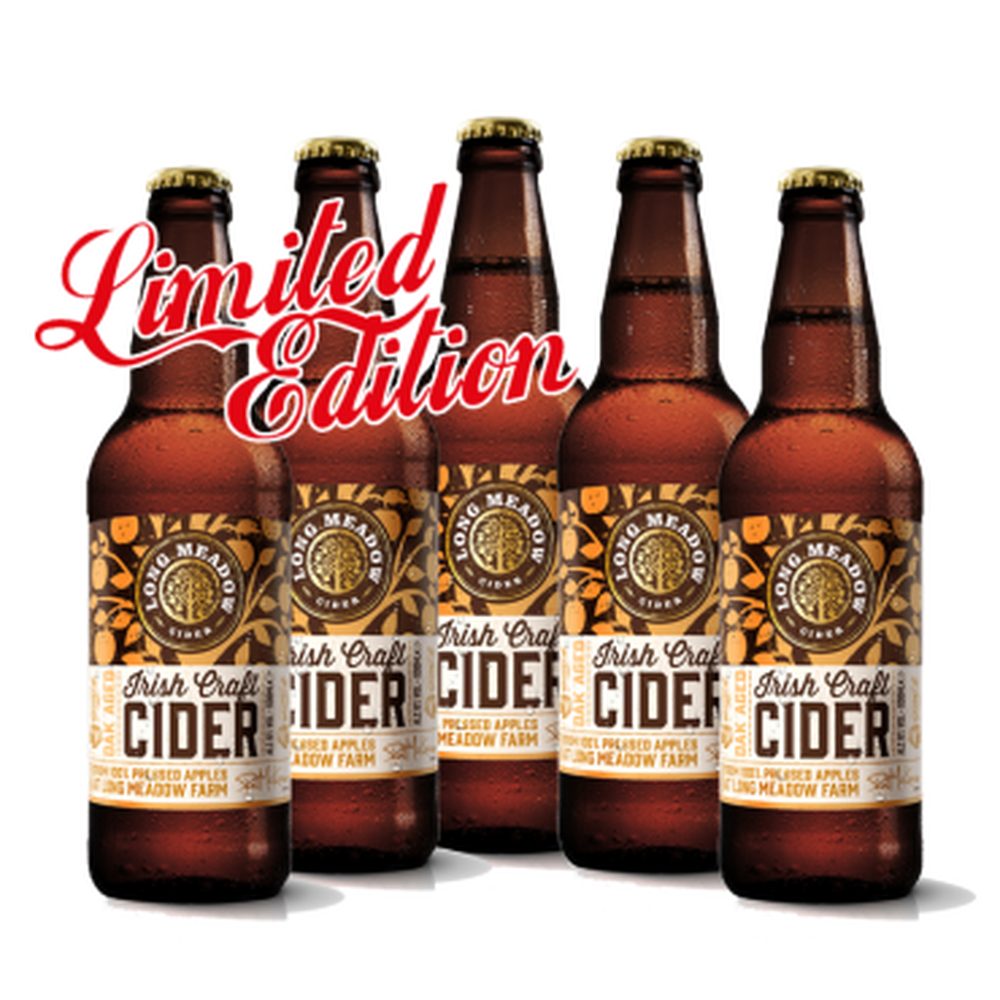
KRISTIN JENSEN, co-author of Slainte! The complete Guide To Irish Craft Beers and Ciders - introduces us to Long Meadow Oak Aged Irish Craft Cider
ABOUT THE CIDER MAKER
Long Meadow Cider is produced by father and son duo Pat and Peter McKeever in the heart of Ireland’s Orchard County, where their family-run farm has been growing apples for fifty years. Talking to the Portadown Times, Pat said making cider was a natural progression when they decided to diversify back in 2010.
‘We were growing apples for the processing and packaging markets and also supplying apples to a number of cider-producing companies in the South and thought it would be nice if we could start producing our own brand of cider and so we started looking into that.’
They started out with two ciders – a medium and a sweet – made exclusively from their own apples and using traditional methods for a ‘plant to pour’ product, as they call it. The range has since expanded to include a mulled cider, a Blossom Burst cider and a limited edition oak-aged cider as well as an apple cider vinegar and both sparkling and still apple juice.
They’ve racked up an impressive number of awards along the way, including Great Taste Awards in 2014 and 2015 and a silver at Blas na hÉireann in 2015. They are going from strength to strength – ones to watch.
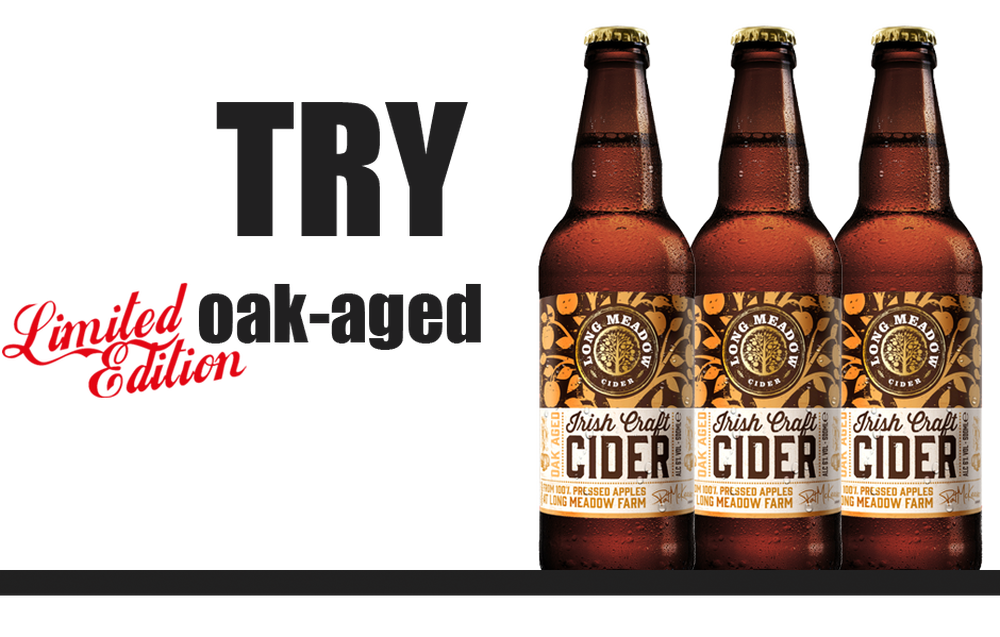
ABOUT THE CIDER
Barrel-aged and oak-aged beers have become increasingly popular in recent years, to the point where used barrels were getting hard to come by in the industry, so it was inevitable that the trend would eventually extend to cider. And it turns out that it’s a wonderful match.
Besides the obvious apple aroma, there is some caramel and brown sugar and even a hint of something floral too. There’s a lovely soft carbonation and a slight citrus zip with a dry finish.
The first sip is all appley sweetness, but by the time the cider hits the back of your throat, the smoky woodiness comes through at the end. It’s a very well-balanced cider, evocative of brisk, golden autumn evenings with the smell of a wood fire in the air. It’s the kind of cider you’ll want to sip all throughout the autumn. It’s a limited edition, though, so snap it up as soon as you can.
This cider would be brilliantly suited to roast pork to complement the smoky char or a ploughman’s platter of salty ham, nutty oatcakes and a strong, mature Cheddar.
--
 Kristin Jensen is a freelance editor specialising in cookery and food books and has worked with many of Ireland's top food writers and chefs. She writes the Edible Ireland blog and is a co-founder of the Irish Food Bloggers Association and, together with Caroline Hennessy, is joint author of Slainte! The complete Guide To Irish Craft Beers and Ciders .
Kristin Jensen is a freelance editor specialising in cookery and food books and has worked with many of Ireland's top food writers and chefs. She writes the Edible Ireland blog and is a co-founder of the Irish Food Bloggers Association and, together with Caroline Hennessy, is joint author of Slainte! The complete Guide To Irish Craft Beers and Ciders .
Northbound Brewery 26 Pale Ale - Beer of the Month


ABOUT THE BREWER
David Rogers and his wife Martina decided to open up a craft brewery in Derry to fit in with rearing a young family.
After becoming interested in craft brewing while living in Australia, management consultant David did a Master Brewing Diploma. He’s originally from Scotland and his wife is from Fermanagh. Martina worked within the financial services sector where she gained sales and marketing skills.
They moved back to Northern Ireland with their three children in 2012. ‘We felt bound by the north-west of the country, hence the name,’ says Martina.
Production started at the Campsie site in a building that used to house a shirt factory. Using local ingredients where possible, including Irish malt, Derry water and Irish carrageen moss, the brewery launched with two beers: 08, a kolsch-style ale, and 26, a pale ale. The range has continued to expand to include an oak-smoked beer, a sticke alt beer, an Indian pale ale and a magnum IPA.
‘We’ve seen best practice in Japan and Australia and I want to take what we’ve learned to make a sustainable brewery in the north-west of Ireland, which hopefully will become a regional brewery.’
David’s knowledge has now been recognised by the Institute of Brewing and Distilling, having been awarded the prestigious Master Brewer qualification, a rare recognition only bestowed upon a dozen people globally each year.
Looking ahead, Northbound Brewery is continuing to trial natural new ingredients that celebrate the high quality of produce in the region, and are collaborating with local producers to bring out the best of the North West.
A successfully established local cheese maker, Julie Hickey of Tamnagh Foods, has washed a new cheese in her Dart Mountain Cheese range, Banagher Bold, with their 26 Pale Ale after being ‘aged for three months to give it the strength it deserves’. It was released in September 2015.
‘If you get it right you can create a great process and come up with consistently good beer. It’s also perfect to fit in with our family life,’ says David.
ABOUT THE BEER
As the Year of Food and Drink in Northern Ireland reaches its penultimate month, it’s a fitting time to review a beer from Derry.
The 26 Pale Ale was one of two flagship beers that the Northbound Brewery launched with in 2015 (the other being a kolsch-style ale). It pours a light golden orange with a thin white head. The aroma is bready, a little bit lemony and a tiny bit floral too, while the flavour has biscuity, fruity and spicy notes.
If you’re wondering what the number in the name of the beer means, it’s actually the beer’s IBU rating (a measurement of bitterness). At 26 it’s in the middle of the spectrum, similar to some pilsners or red ales, and is nicely balanced – this isn’t a beer that knocks you over the head with its bitterness or a high ABV (this one is a standard 5%).
Pale ales are really versatile when it comes to pairing them with food. Burgers, cold or grilled meats, creamy pasta sauces, roast beef or chicken, pâté, quiche and even Thai food are all perfectly good matches, as is a semi-soft, white rind cheese like Cooleeney or Wicklow Baun.
--
 Kristin Jensen is a freelance editor specialising in cookery and food books and has worked with many of Ireland's top food writers and chefs. She writes the Edible Ireland blog and is a co-founder of the Irish Food Bloggers Association and, together with Caroline Hennessy, is joint author of Slainte! The complete Guide To Irish Craft Beers and Ciders . Kristin is Secretary of the Irish Food Writers’ Guild.
Kristin Jensen is a freelance editor specialising in cookery and food books and has worked with many of Ireland's top food writers and chefs. She writes the Edible Ireland blog and is a co-founder of the Irish Food Bloggers Association and, together with Caroline Hennessy, is joint author of Slainte! The complete Guide To Irish Craft Beers and Ciders . Kristin is Secretary of the Irish Food Writers’ Guild.
Gallows Hill Barley Wine - Beer of the Month


KRISTIN JENSEN - co-author of ‘Slainte! The complete Guide To Irish Craft Beers and Ciders’ - introduces us to Dungarvan Brewing Company Gallows Hill Barley Wine
ABOUT THE BREWER
Dungarvan Brewing Company was founded by brothers-in-law Cormac O’Dwyer and Tom Dalton along with their wives, Jen and Claire, with a view to offering the Irish beer drinker a greater choice in craft beers, with an emphasis on quality, craft and tradition.
Launched in April 2010, the brewery is located in the historic market town of Dungarvan, which has a rich history of brewing as well as a strong food culture, both in food production and a thriving restaurant scene.
All the beers are brewed in small batches using only four ingredients – barley, hops, yeast and water - and are vegan friendly.
The beer is kept in its purest form by bottle-conditioning it, which means that a natural carbonation process occurs within the bottle that eliminates the need for the addition of further gas to the beers. It isn’t filtered or pasteurised, so there is minimum interference between the raw ingredients (including the limestone-rich water of west Waterford) and the finished product.
The draught offering is cask ale, dispensed by traditional hand pumps, which the brewery supplies to select pubs throughout Ireland as well as at a range of festivals and events during the year.
The core range is made up of three beers: Black Rock Irish Stout, a dry stout; Copper Coast Irish Red Ale, a fruity red ale; and Helvick Gold Irish Blonde Ale, a generously hopped blonde ale. Seasonal beers include Comeragh Challenger Bitter, a seaweed saison and their popular Coffee and Oatmeal Stout for the winter time. They also make limited edition beers for festivals. Check their website for suggested beer and food pairings and recipes.
Dungarvan Brewing Company beers can be found throughout Ireland; check their website for stockists.
The brewery is happy to accommodate tours as long as you contact them beforehand to arrange your visit.
ABOUT THE BEER
Like many of Dungarvan Brewing Co.’s beers, this one, their first autumn seasonal, is named after a local landmark, Gallows Hill. No one is quite about the origins Gallows Hill. Some of the theories are that it was a Norman motte and bailey, a Bronze Age barrow or even the fort (dún) that Dungarvan was named after. We may soon find out, though, because the Waterford County Museum commissioned a geophysical survey of the hill as part of the celebrations of the 800th anniversary of Dungarvan’s town charter in July of this year.
Barley wine is a strong ale that was originally brewed in England. American brewers are also making barley wine now, though they tend to be hoppier and hence more bitter than British barley wines, which are on the sweeter side.
But enough of the history – how does it taste? At 8.5% ABV, this Irish version cleaves more closely to the traditional, sweeter British style. The first sip is all dark, dried fruits and caramel maltiness, but then the hop bitterness immediately take over for a lasting dry finish that is almost tannic, reminiscent of a very strong black tea. As the beer warms up, though, it mellows out into a well-balanced drink that is very pleasant to sip and take your time over.
Barley wines are strong beers and lend themselves well to slow sipping after a meal, ideally served in a snifter glass at cellar temperature (11–13°C) rather than fridge cold. They are also fabulous when paired with Christmas cake or your Christmas cheese board, especially an English Stilton or a mature Cheddar - such as the magnificent Mount Leinster Clothbound made by Tom Burgess of Coolattin Cheddar at Tullow, Co Carlow, and declared Supreme Champion at last year’s Irish Cheese Awards.
This autumn 2016 seasonal beer is a limited edition with very limited availability, so snap it up if you see it.
--
 Kristin Jensen is a freelance editor specialising in cookery and food books and has worked with many of Ireland's top food writers and chefs. She writes the Edible Ireland blog and is a co-founder of the Irish Food Bloggers Association and, together with Caroline Hennessy, is joint author of Slainte! The complete Guide To Irish Craft Beers and Ciders . Kristin is Secretary of the Irish Food Writers’ Guild.
Kristin Jensen is a freelance editor specialising in cookery and food books and has worked with many of Ireland's top food writers and chefs. She writes the Edible Ireland blog and is a co-founder of the Irish Food Bloggers Association and, together with Caroline Hennessy, is joint author of Slainte! The complete Guide To Irish Craft Beers and Ciders . Kristin is Secretary of the Irish Food Writers’ Guild.
Show me all Article

